Chef Okada's Hijiki Journal (Yuzu Citron)
Chef Daisuke Okada from Sumeshiya (Sushi Restaurant), a partner chef of Sea Vegetable, introduces delicious ways to prepare and enjoy "Young Hijiki with Yuzu (Citron)."
This type of hijiki is harvested at its young stage, and lightly boiled and preserved with yuzu and salt. Unlike the more mature hijiki commonly available in the market, this hijiki offers a unique crunchy flavor that is compatible with various dishes.
Let me know introduce you how to desalt the Hijiki and pair this delightful sea vegetable in various dishes.
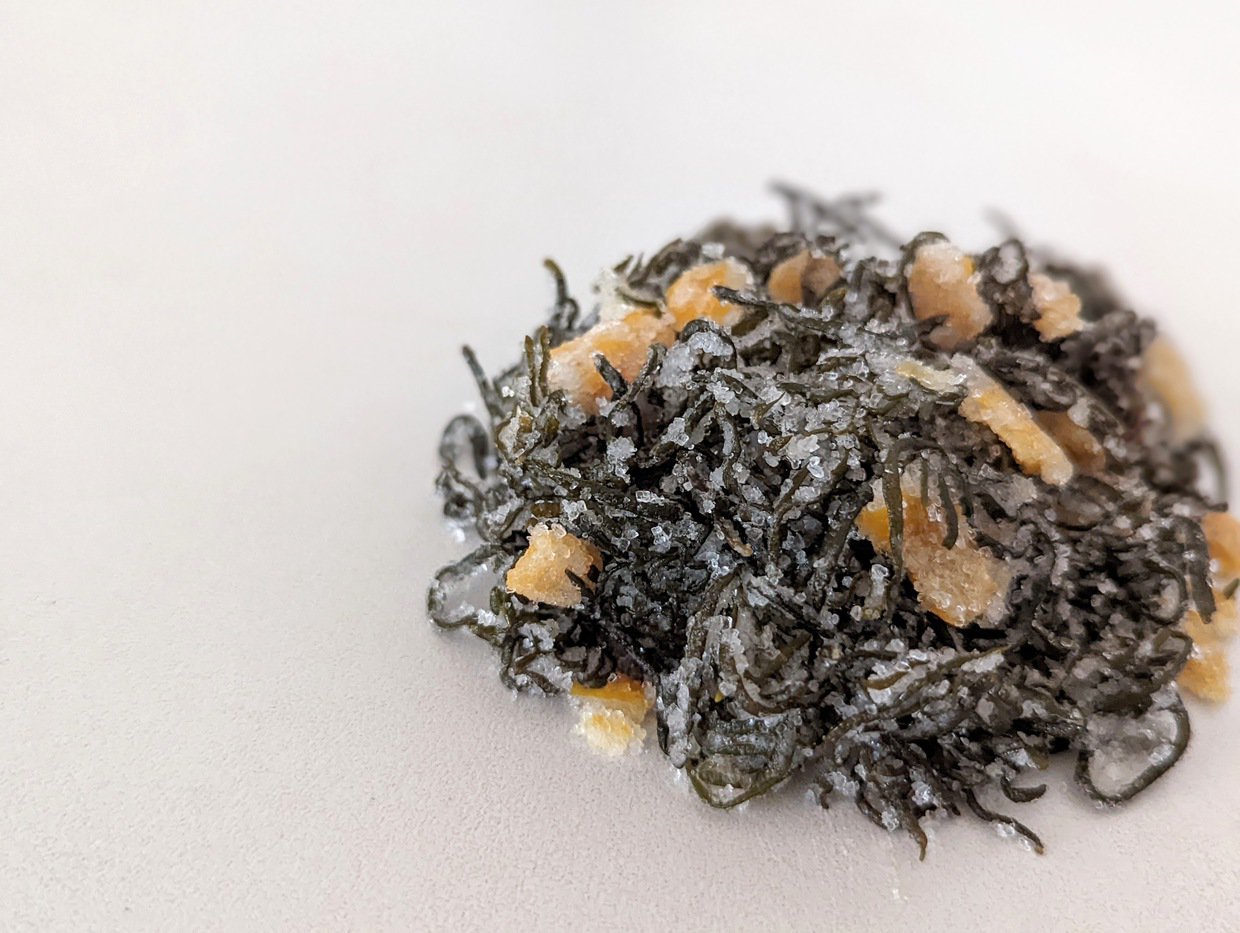
[Young Hijiki Yuzu]
Young Hijiki with Yuzu is a versatile seaweed that can be enjoyed both as a standalone snack and as a part of various dishes. It is often described as a "vegetable from the sea" due to its delicious taste and numerous health benefits.
Instructions
To enjoy Young Hijiki with Yuzu, follow these steps to desalt it:
- Rinse: Rinse the salted hijiki under cold running water.
- Soak: Soak the hijiki in a bowl of water. Use five times the amount of water compared to the hijiki.
- To retain some saltiness: Soak for 4 minutes.
- For eating directly: Soak for 5 minutes.
- To remove most of the salt: Soak for 6-7 minutes.
- Drain: Drain and lightly squeeze out excess water.
- Adjust Length: If the hijiki pieces are too long, cut them into your desired length.
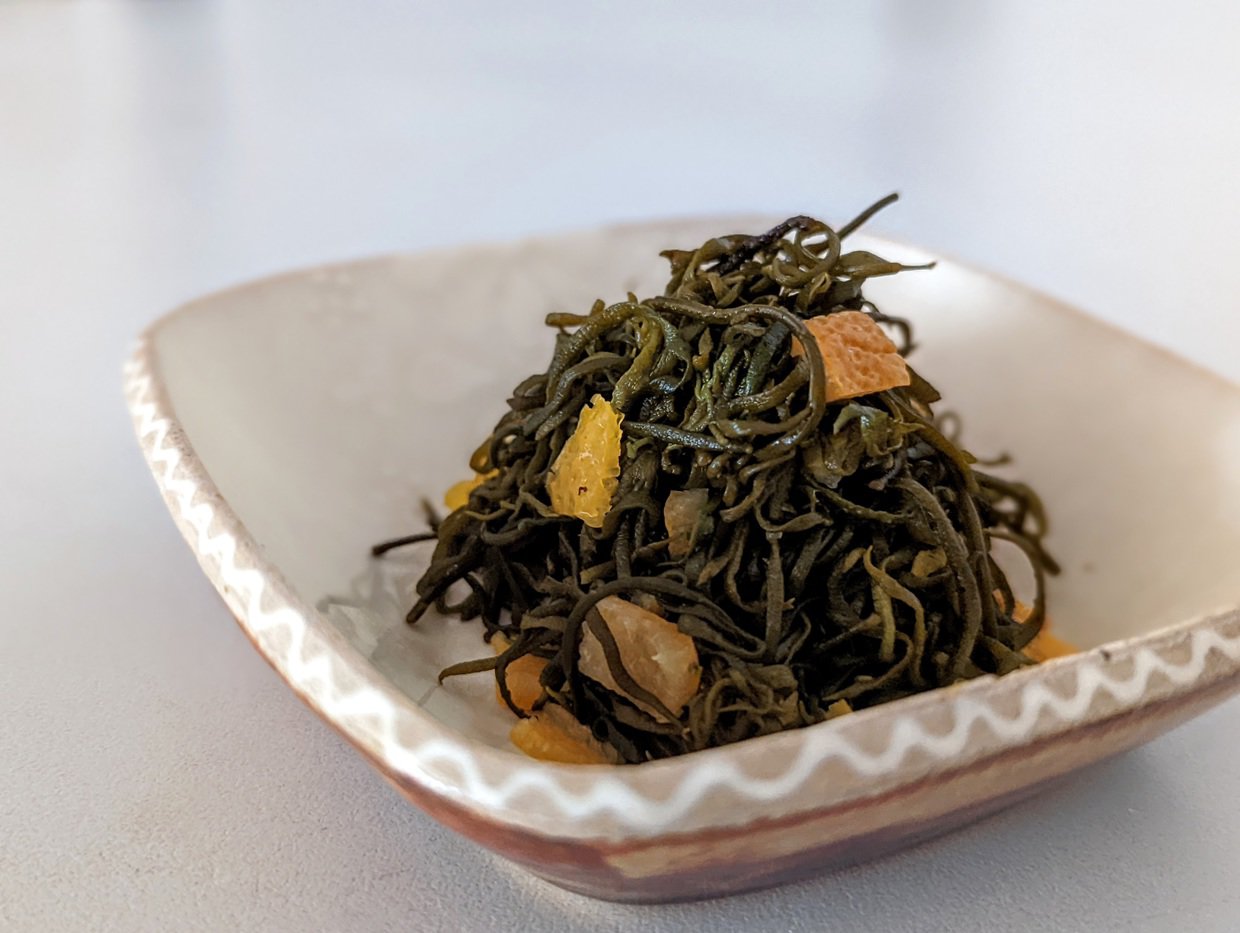
After Desalting
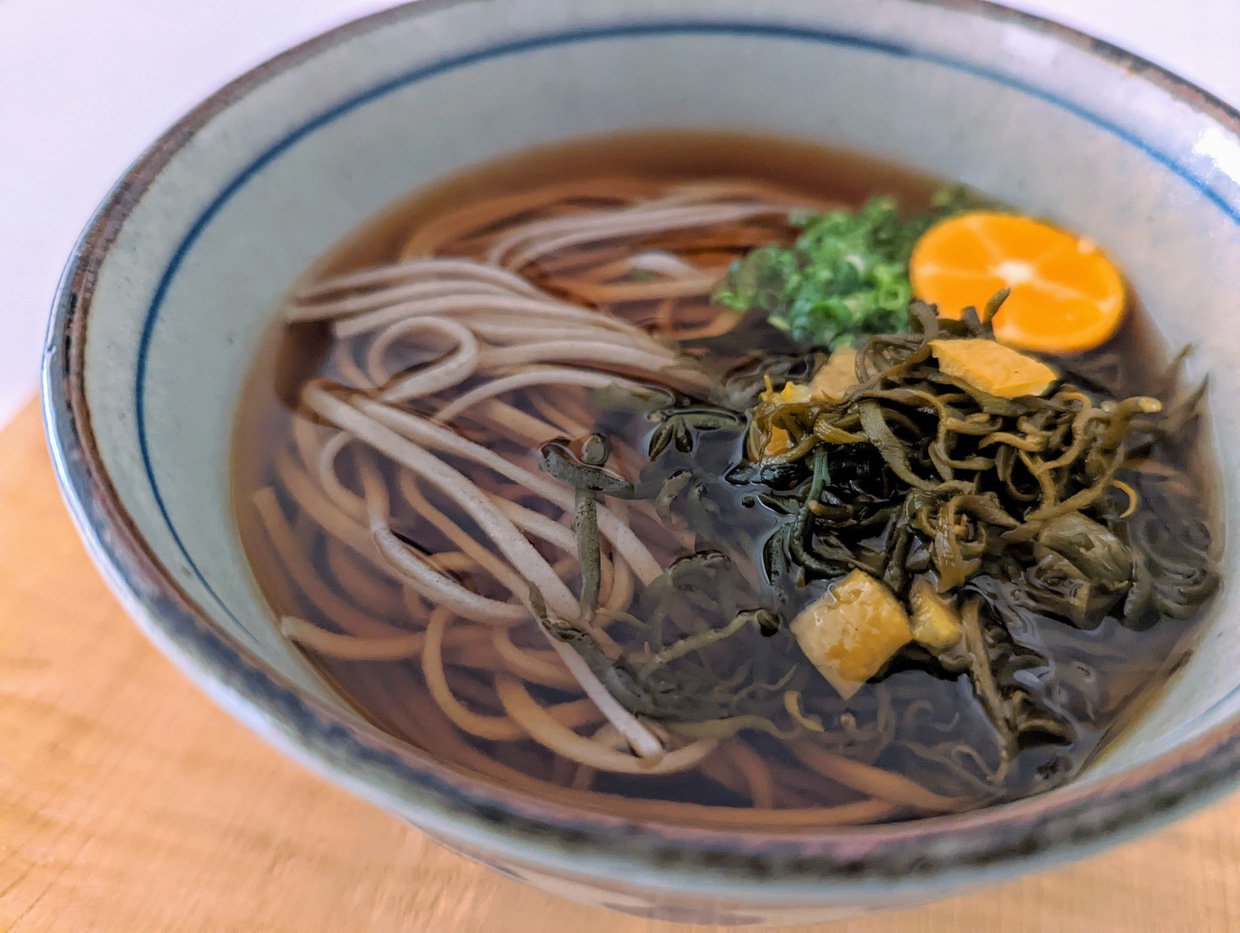
[Yuzu Hijiki Soba]
This dish was definitely delicious as I expected! It's a dish that I want to recommend to everyone for sure. The texture of the Soba noodles becomes a great companion of Hijiki.
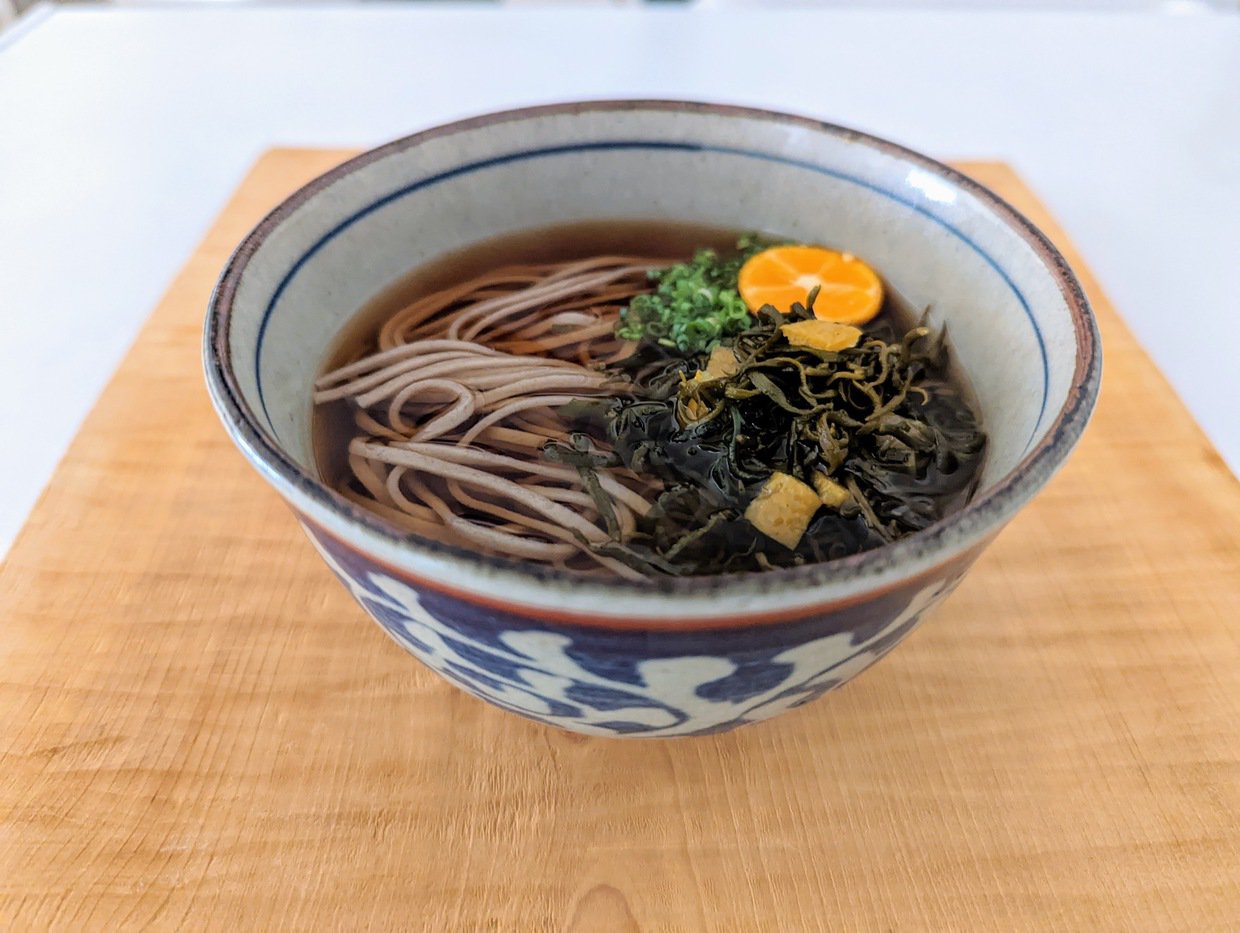
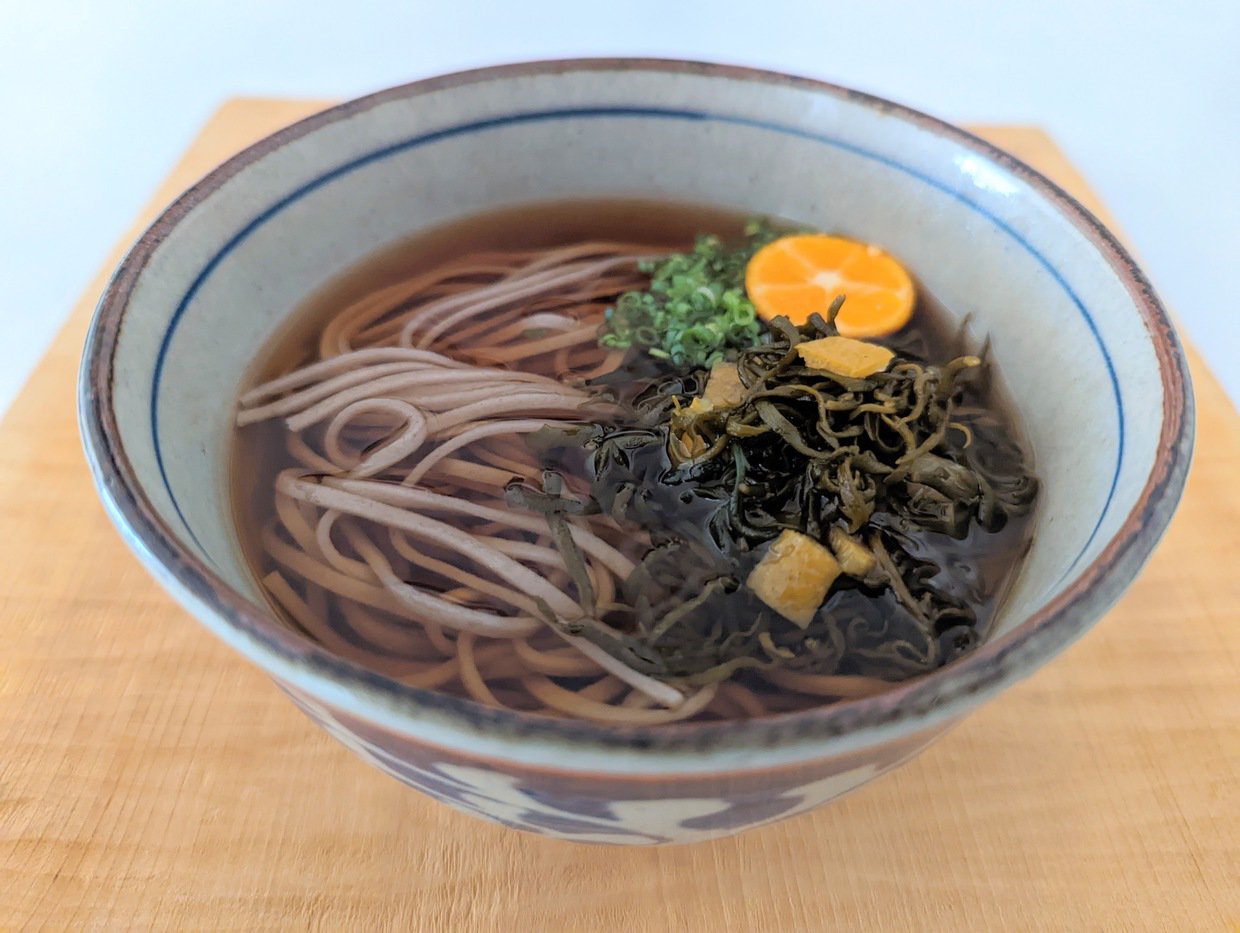
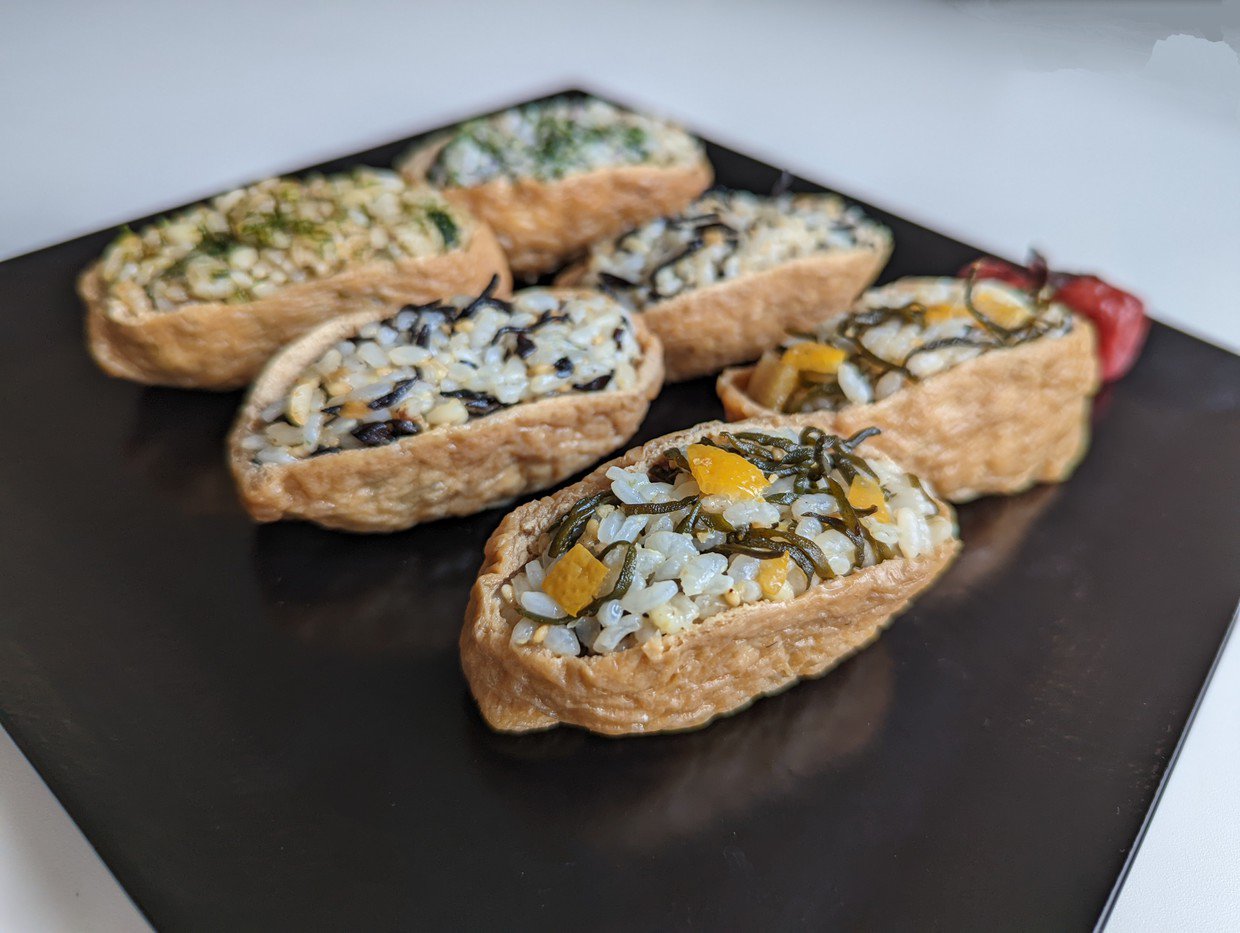
Inari sushi Hijiki is also perfect !
[Yuzu Hijiki Inari Sushi]
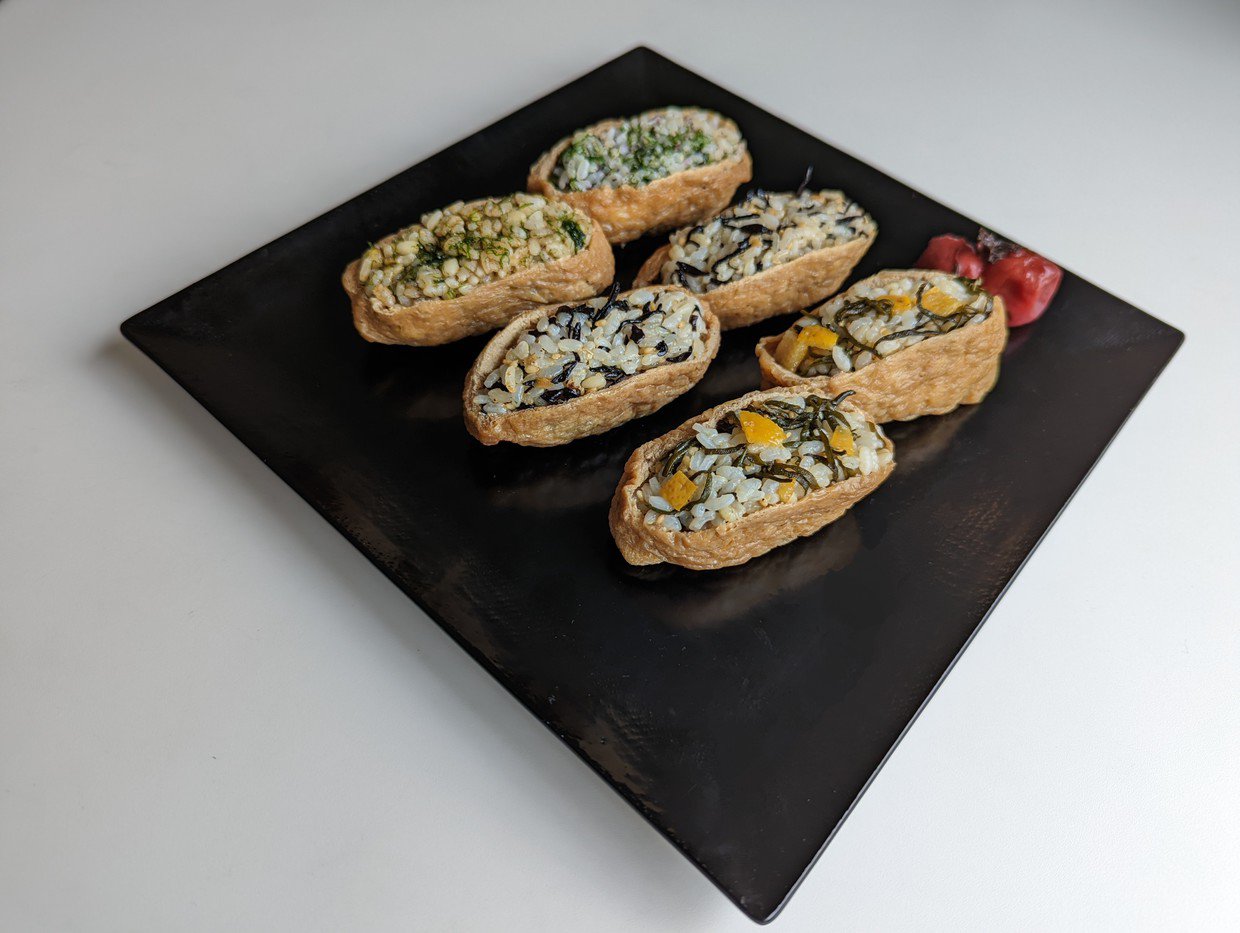
Since I want to make the Aburaage and Vinegered Rice stand out, I desalted the Hijiki for about 7 minutes to reduce its saltiness.
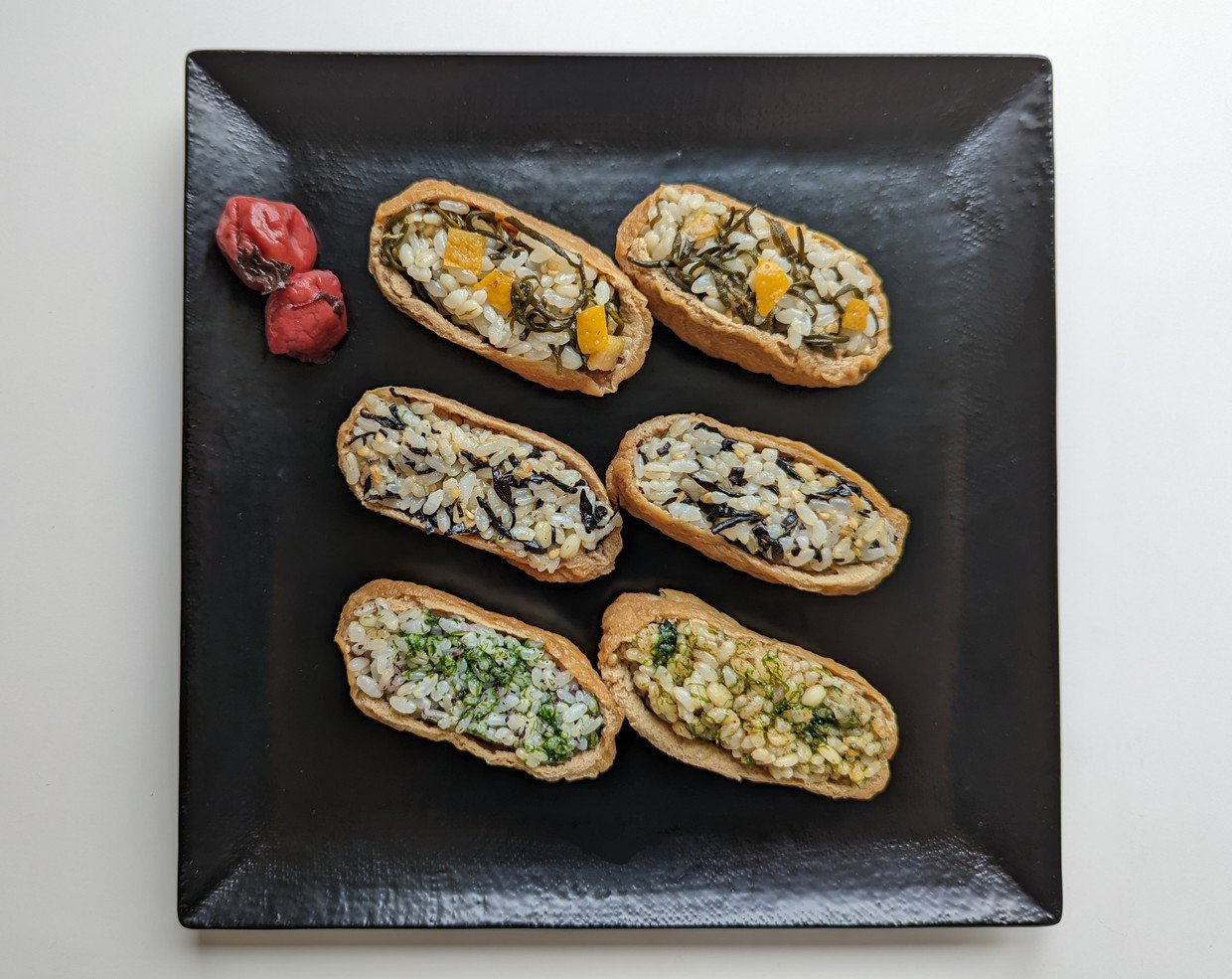
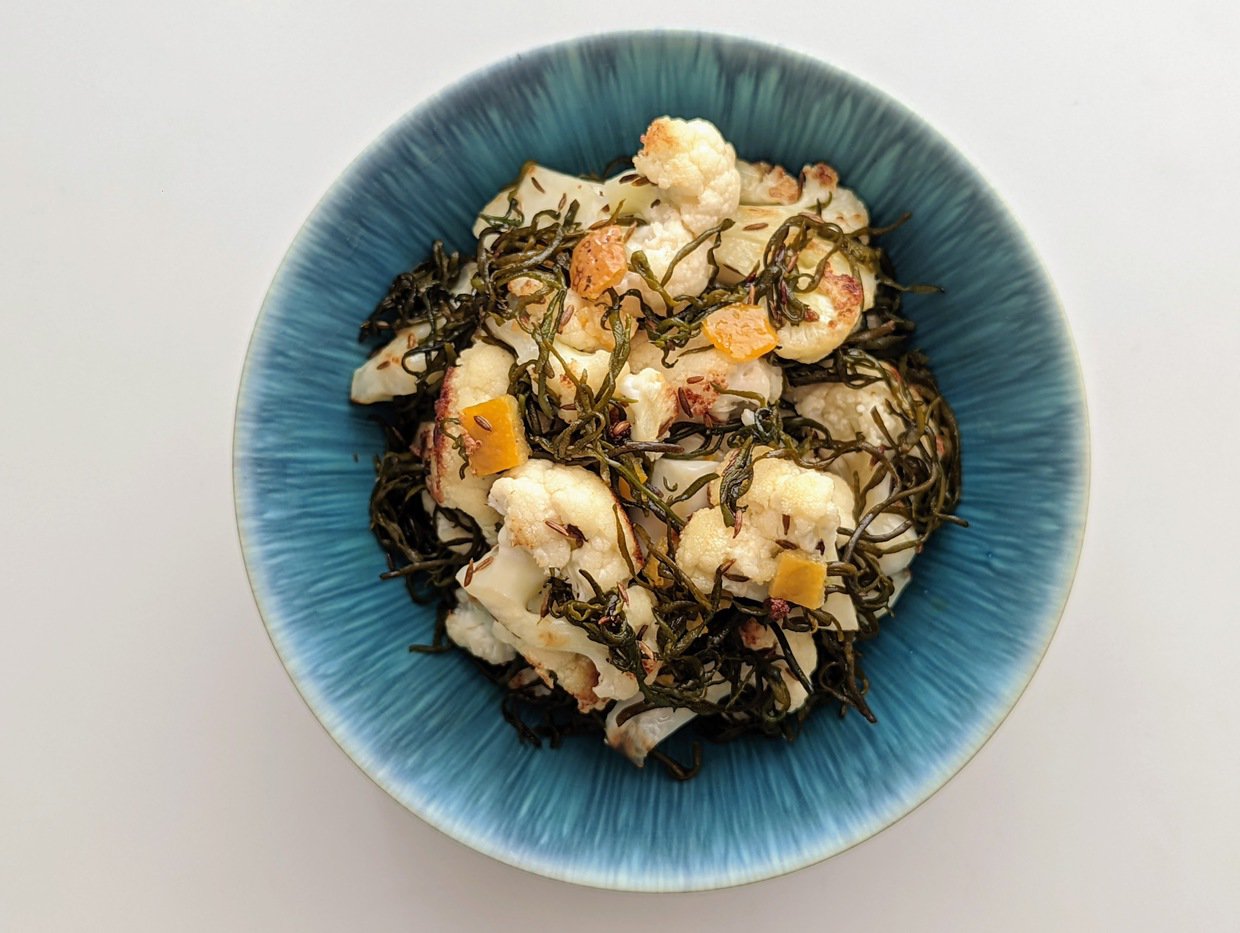
[Yuzu Hijiki Cauliflower]
First, remove the salt from the Hijiki with leaving a little bit of saltiness.
Fry the cumin seeds, add cauliflower and fry again.
Turn off the heat, mix yuzu hijiki and its all done!
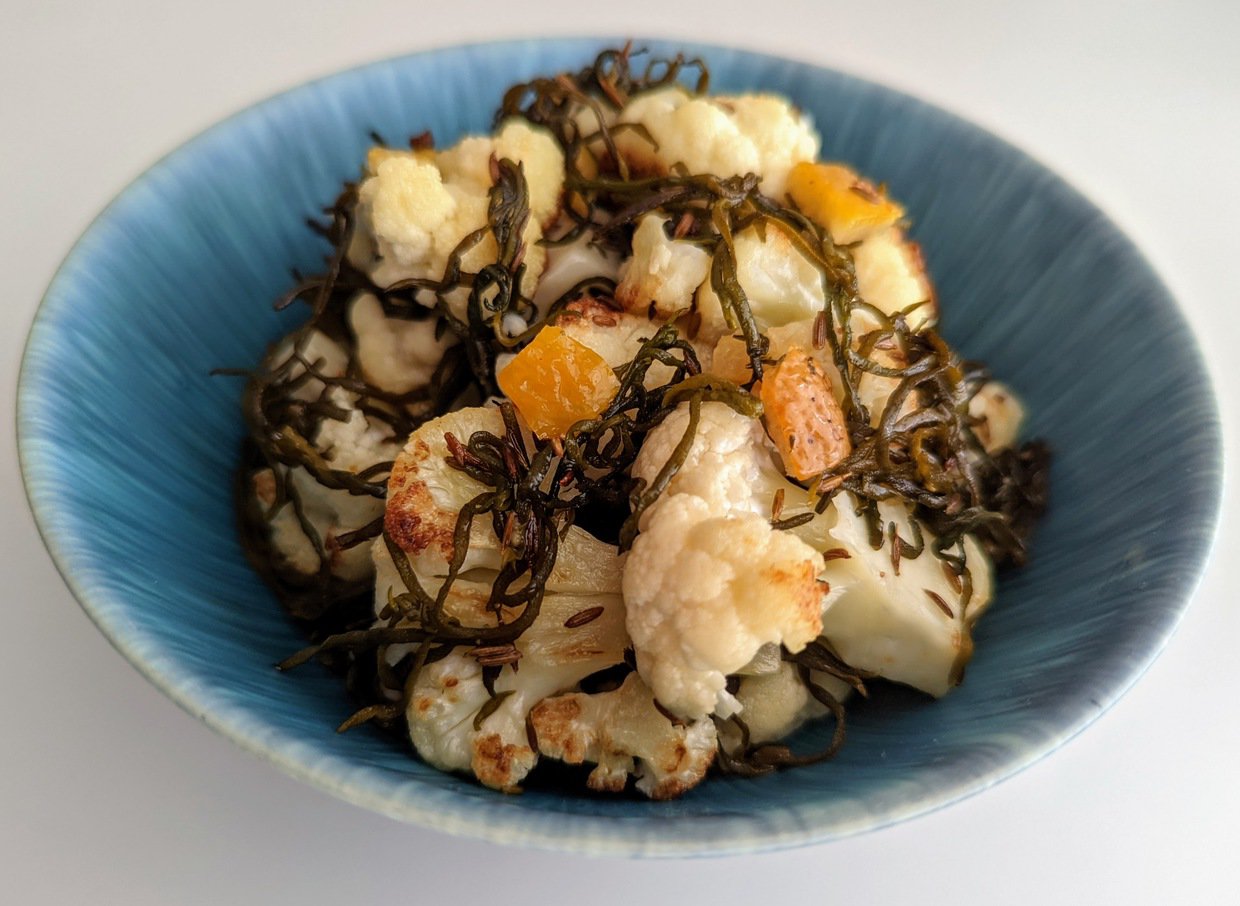
Be careful not to fry the Hijiki too much, but rather lightly mix it with the cooked warm ingredients.
This leaves the hijiki with more texture.
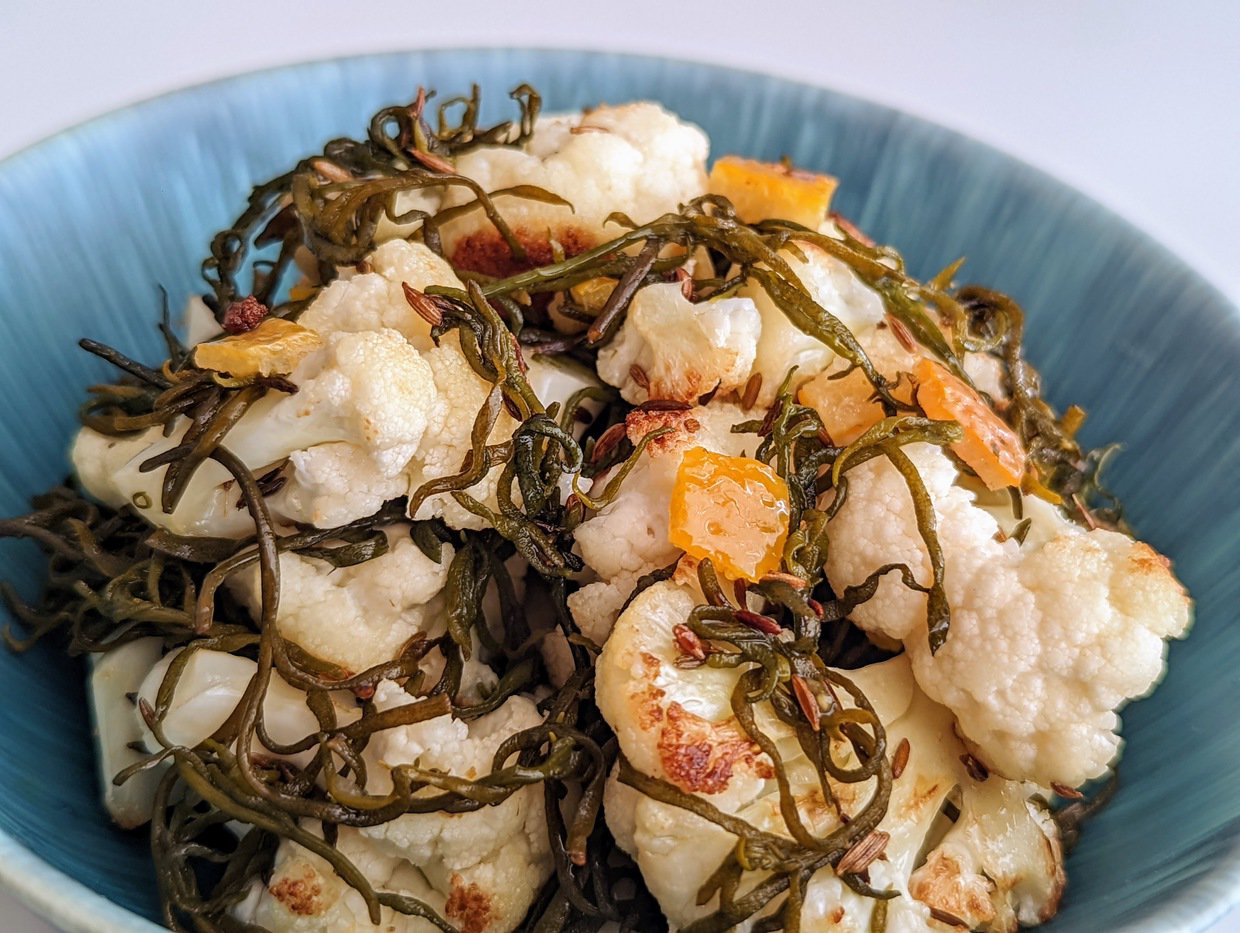
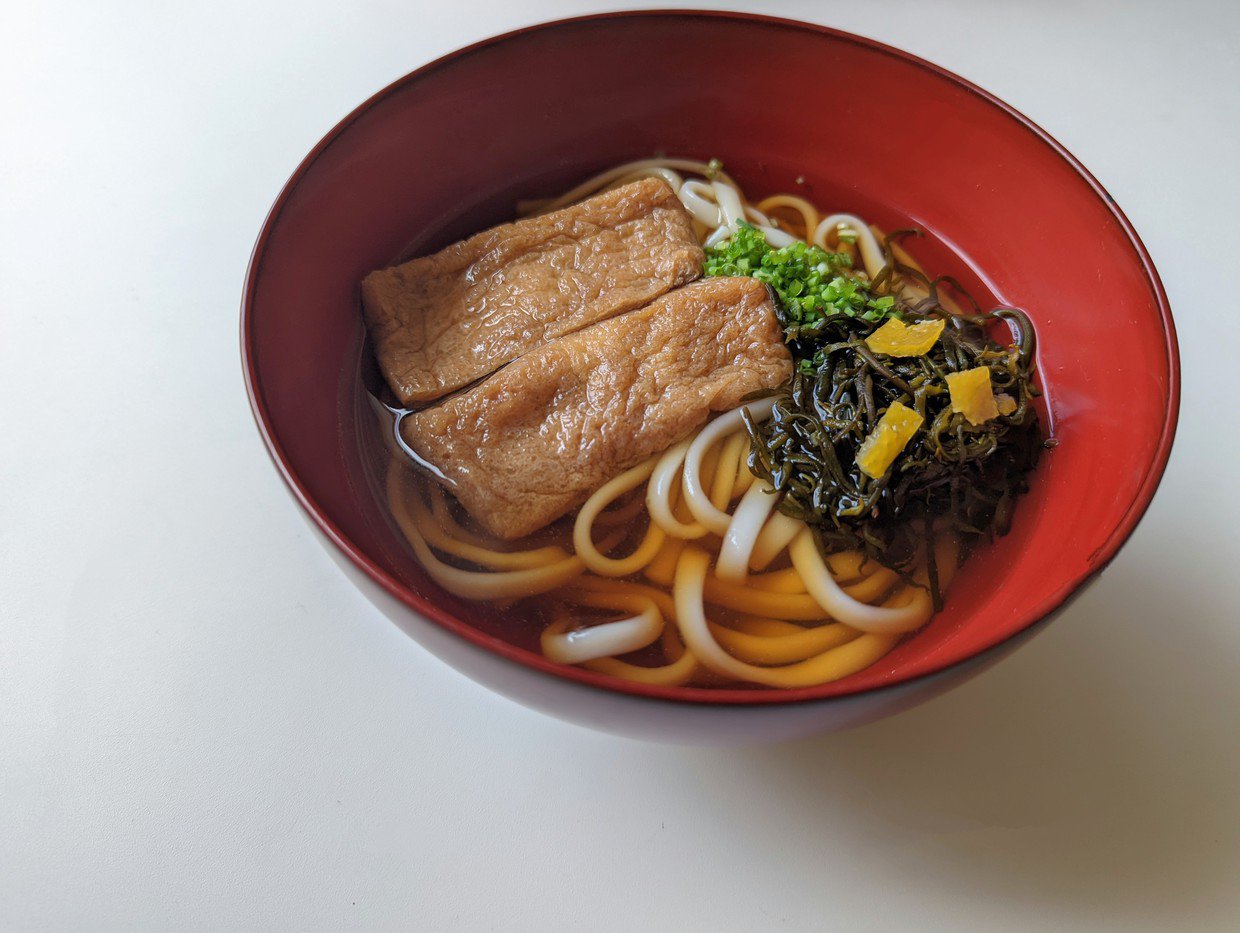
[Yuzu Hijiki Udon]
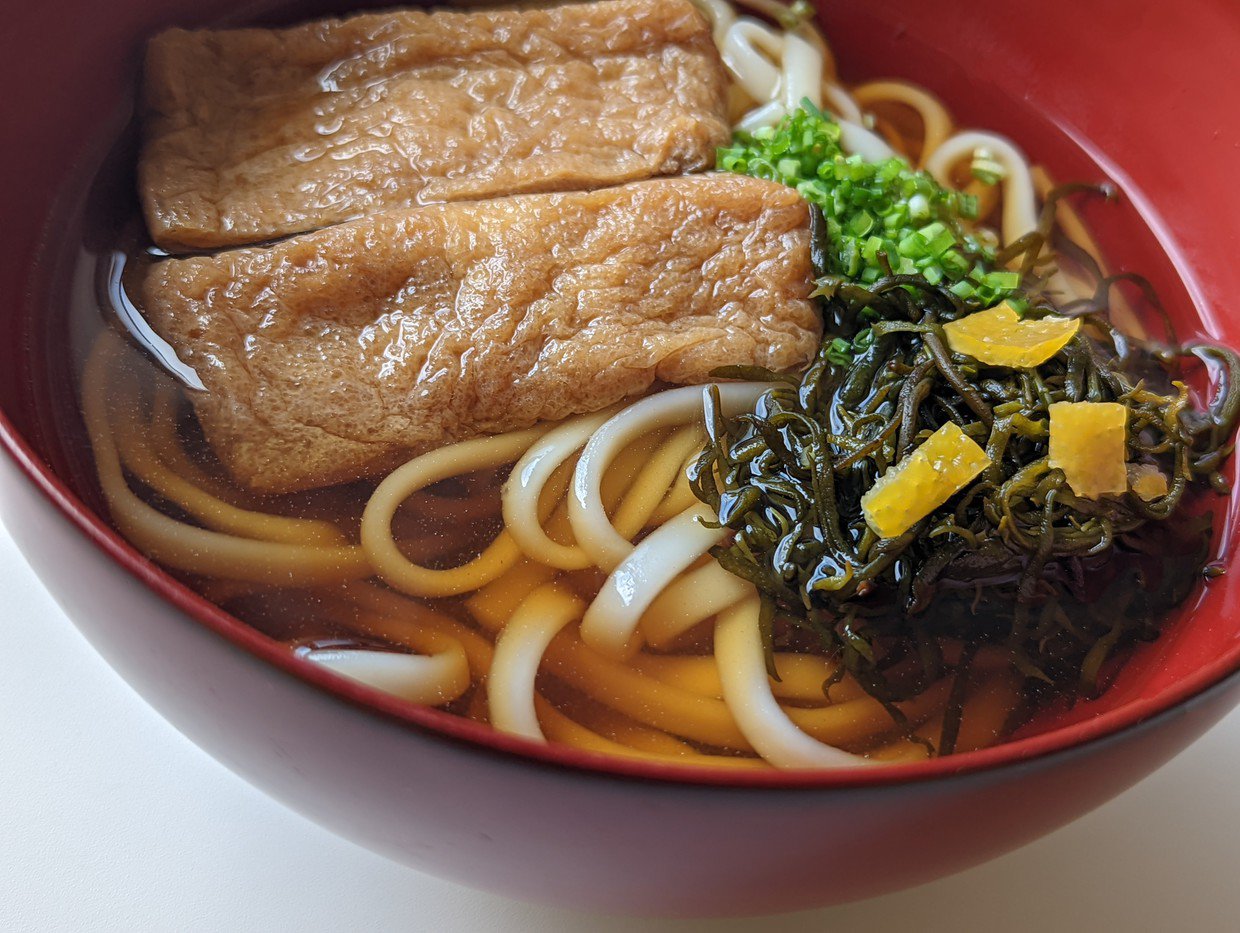
Unlike soba noodles, the fried tofu in the bonito soup makes the dish mildly sweet.
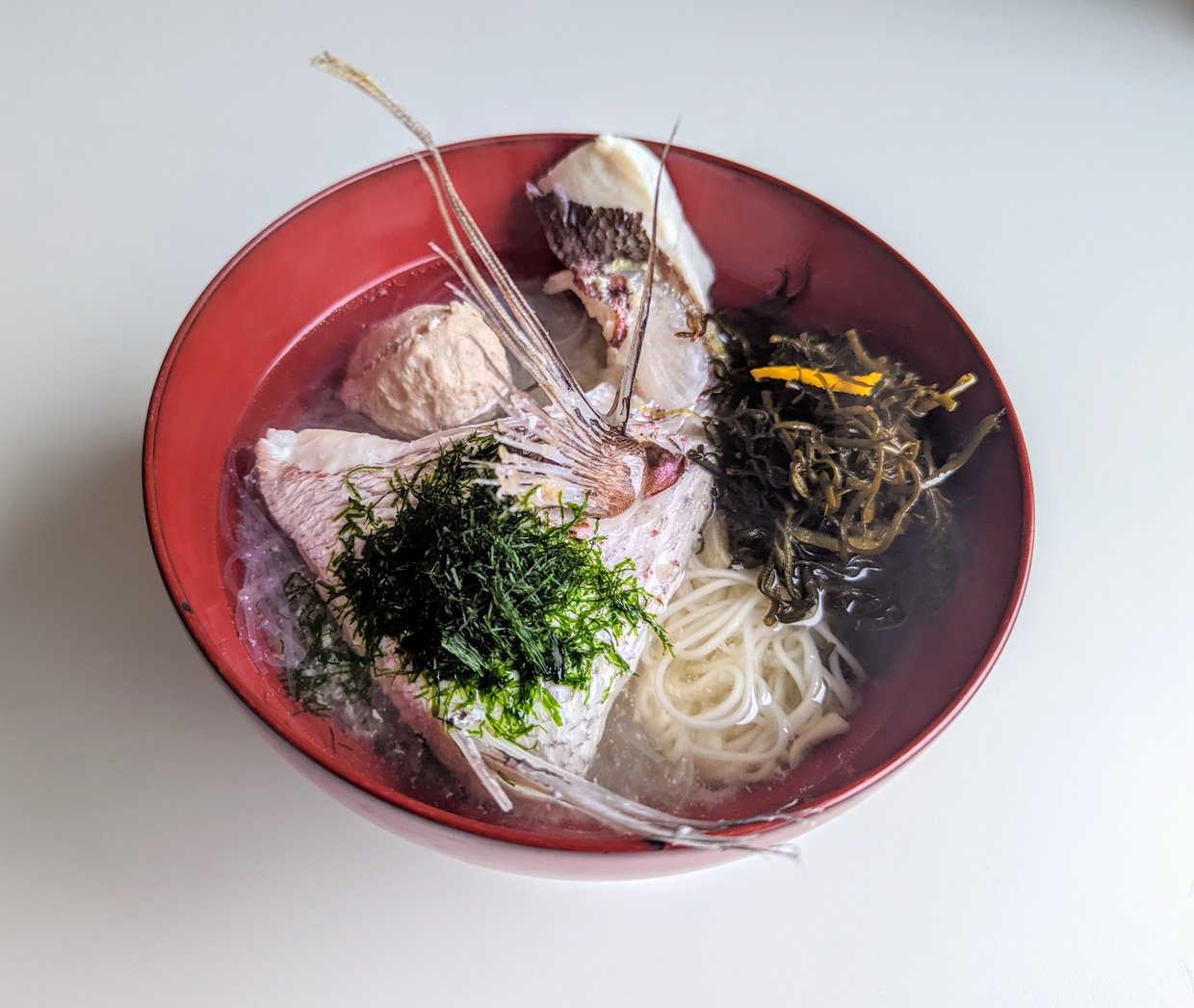
[Thai Somen Noodles]
Yuzu Hijiki also creates a perfect balances with somen noodles too.
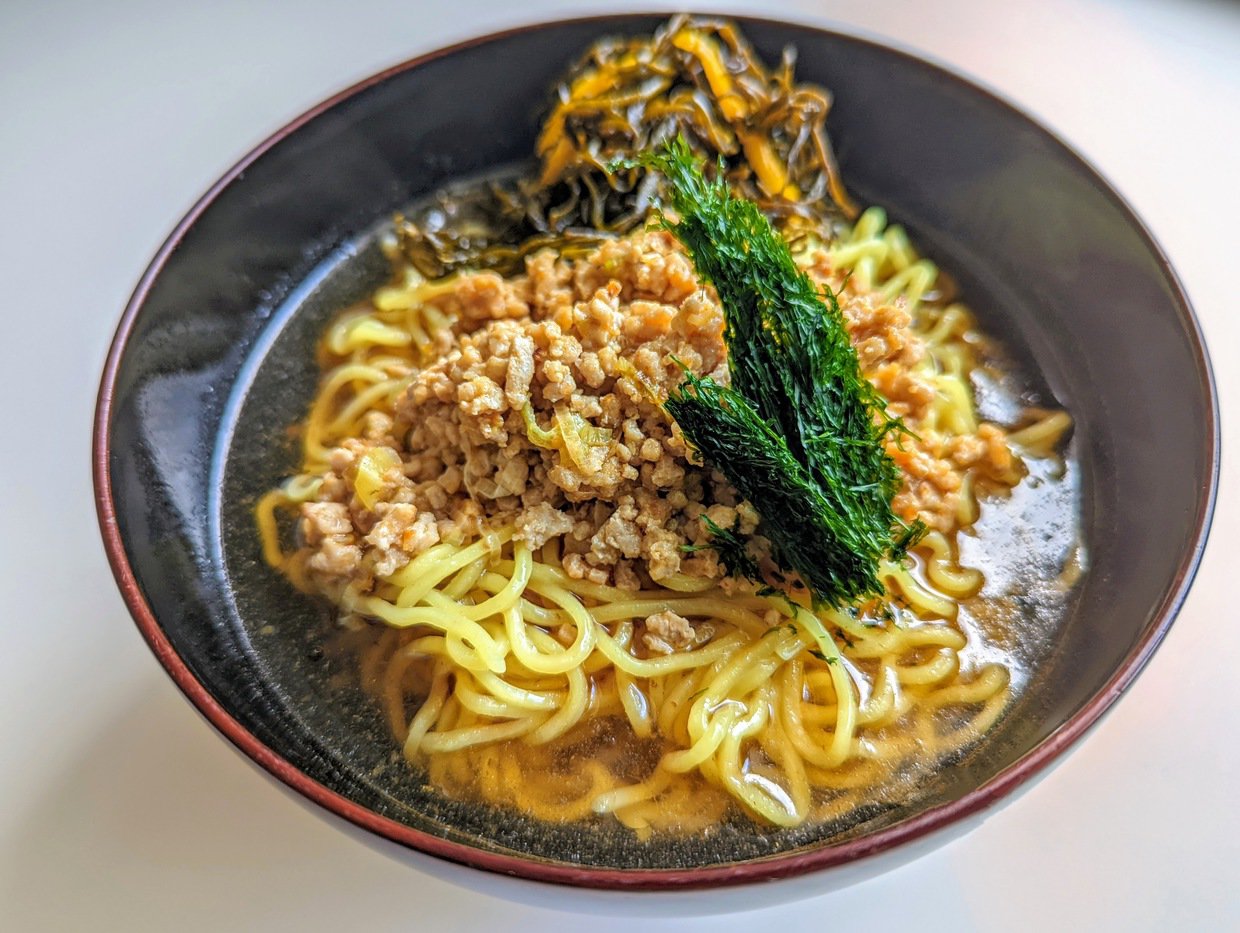
[Tantan Noodles (Chinese Noodles in Spicy Soup)]
This tantan noodle is rich in soup broth wih mined meat and chicken based sauce.
Underneath Suji-Aonori lays Young Hijiki.
The flavor blends so well when you eat these two seaweeds together with noodles.
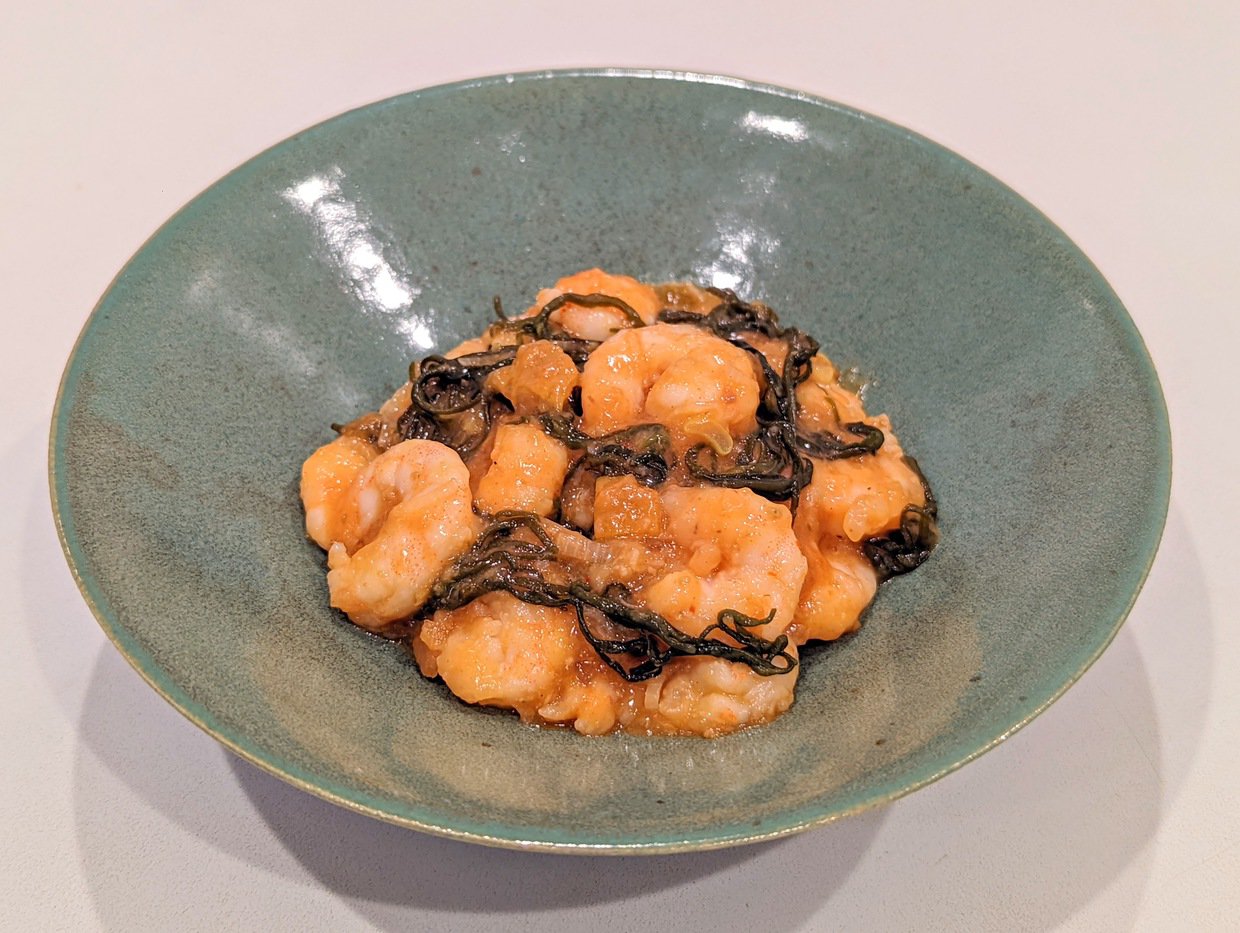
[Yuzu Hijiki Shrimp Chile]
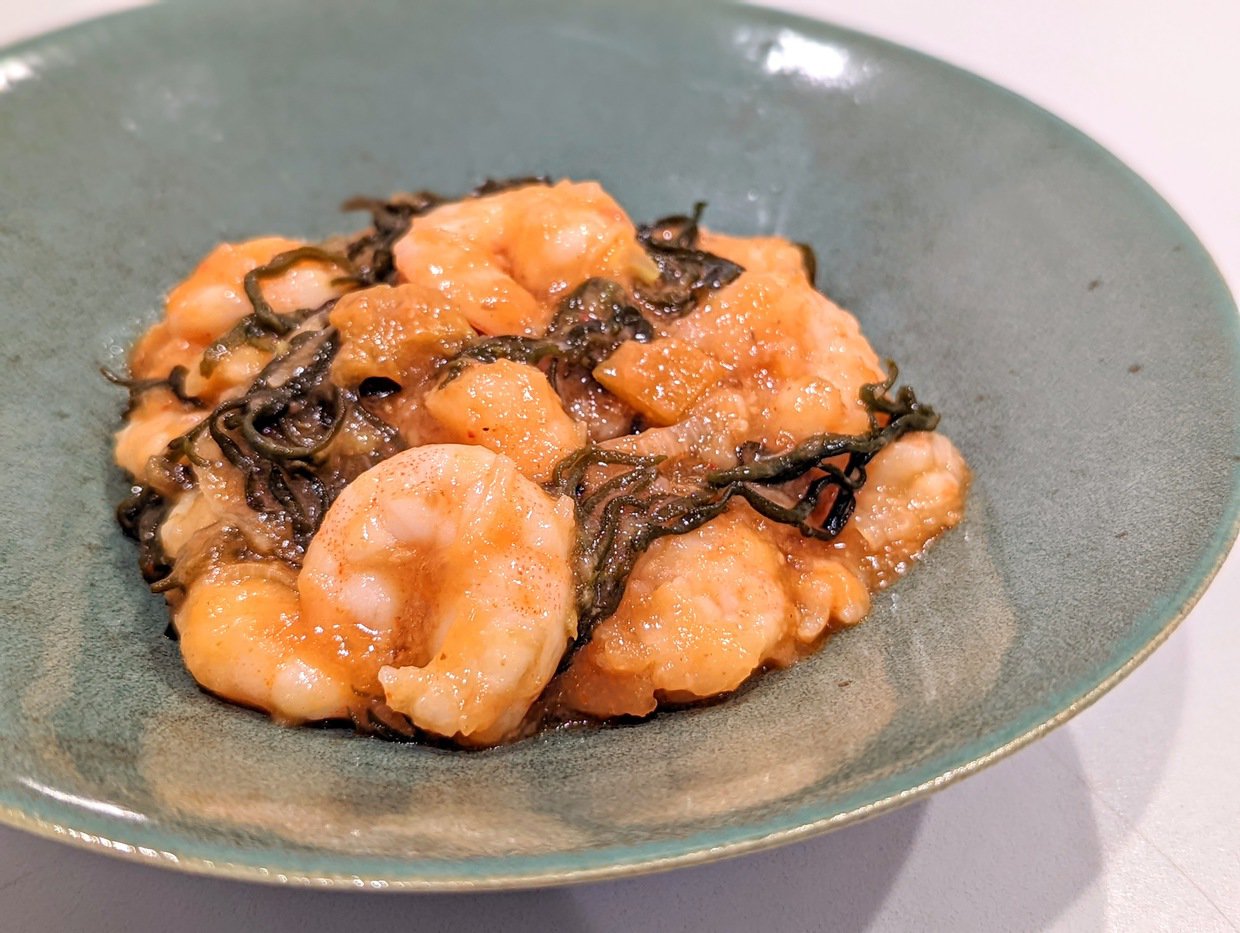
Mix Young Hijiki with Shrimp Chili.
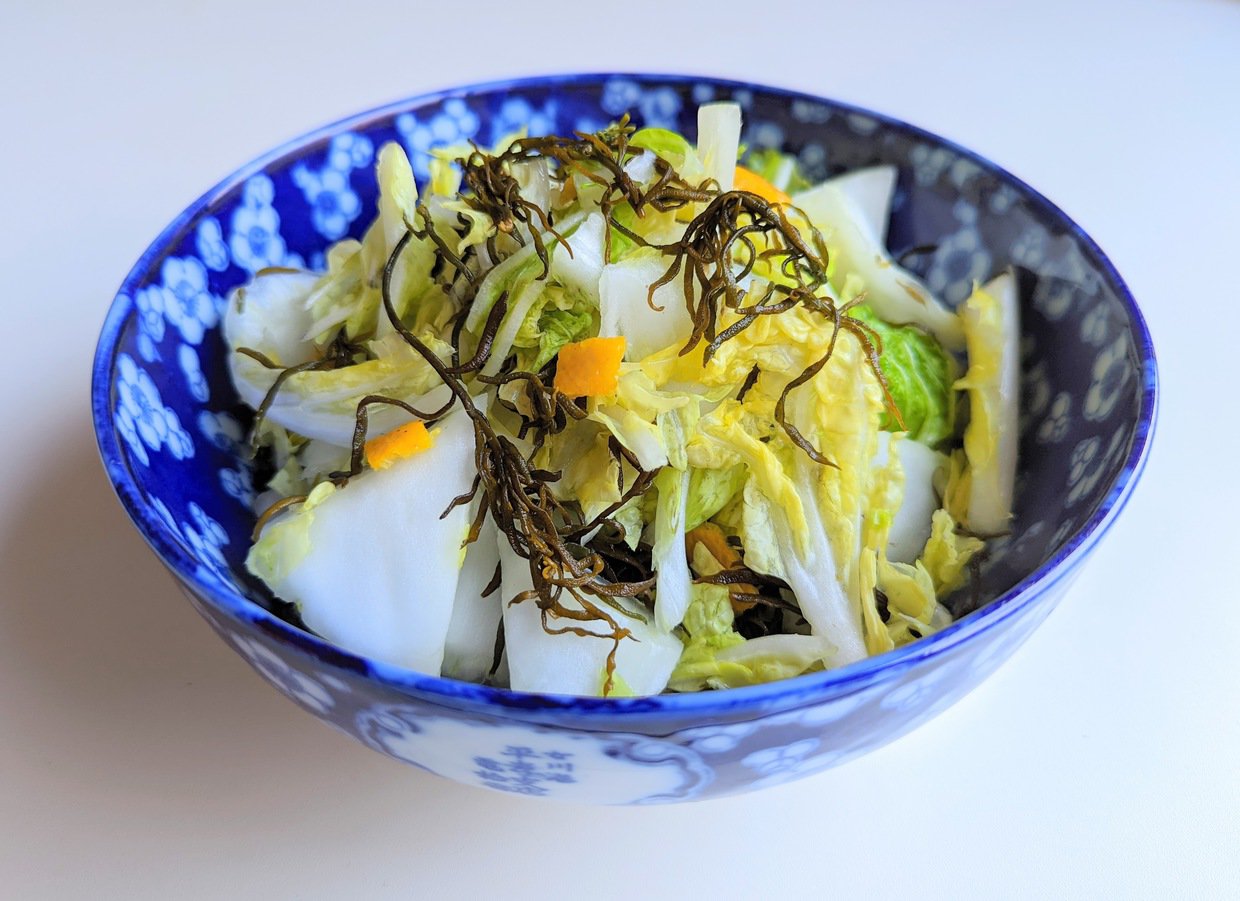
[Yuzu Hijiki Chinese cabbage salad]
I recommend using about 100g of hijiki for 300g of Chinese cabbage.
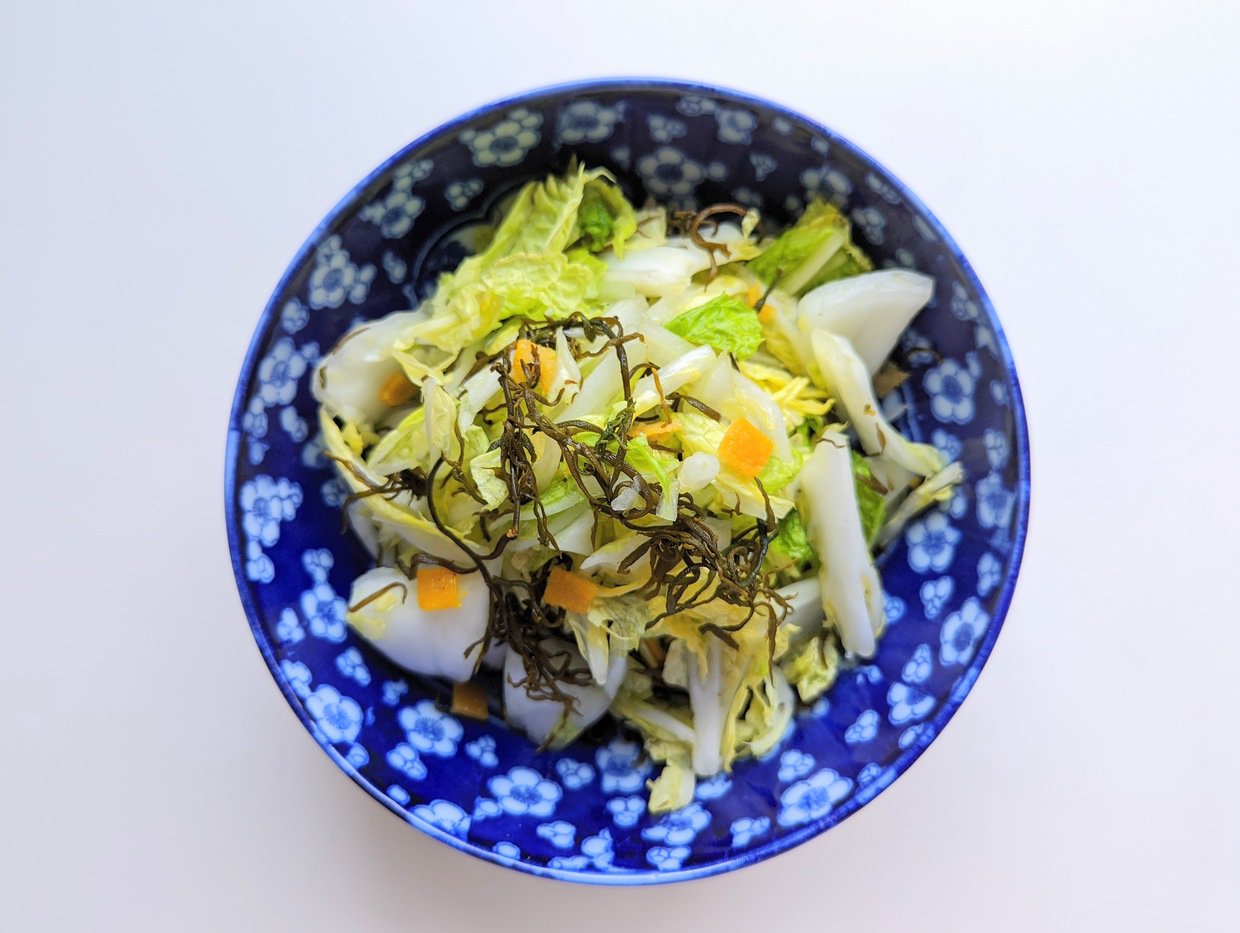
Remove the water from the hijiki with a paper towl and mix it with the Chinese cabbage. Cut the cabbage into edible pieces if you want to.
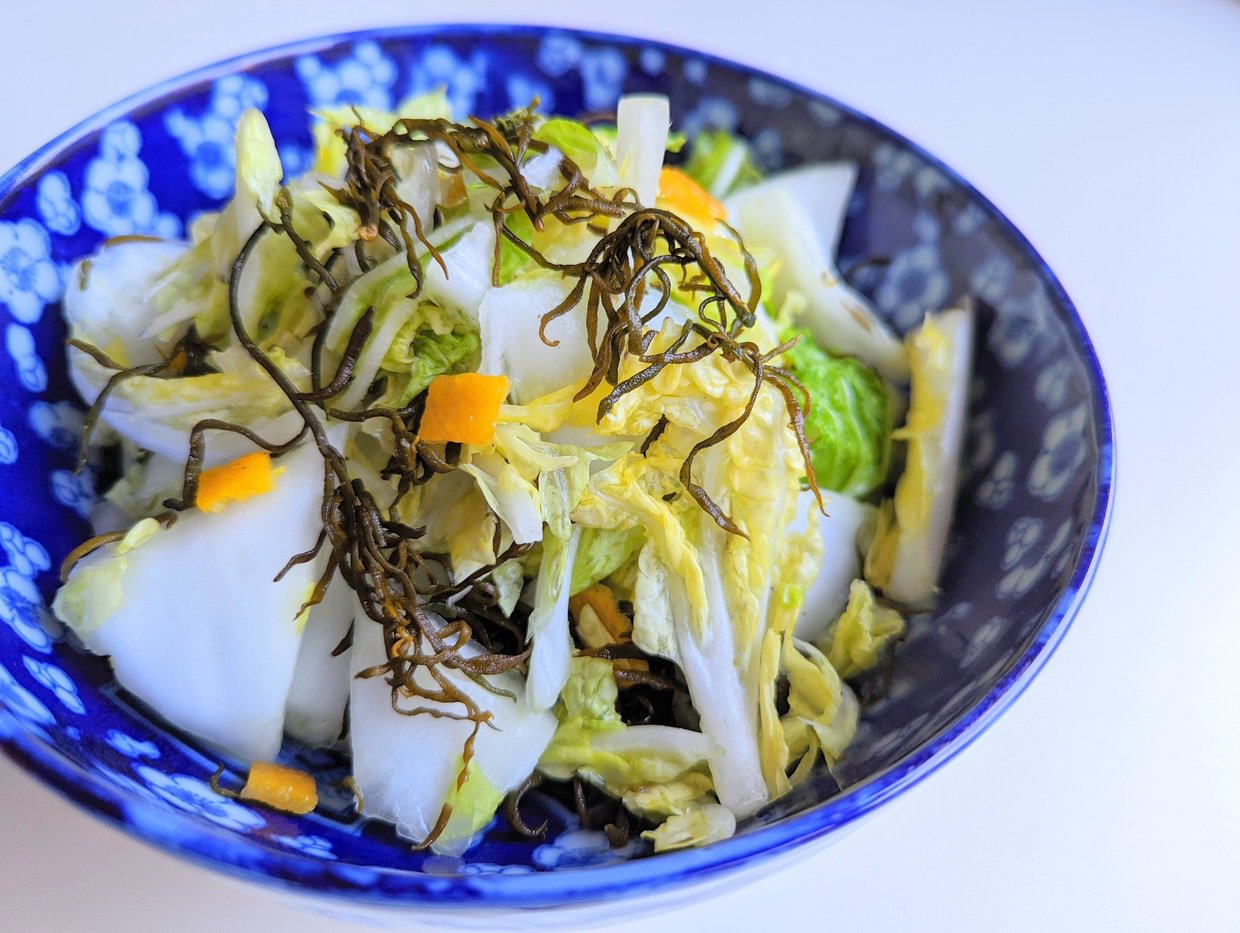
It's delicious even if you eat it as it is, but you can even add sesame oil, olive oil and a drizzle of vinegar to it for a change in flavor!
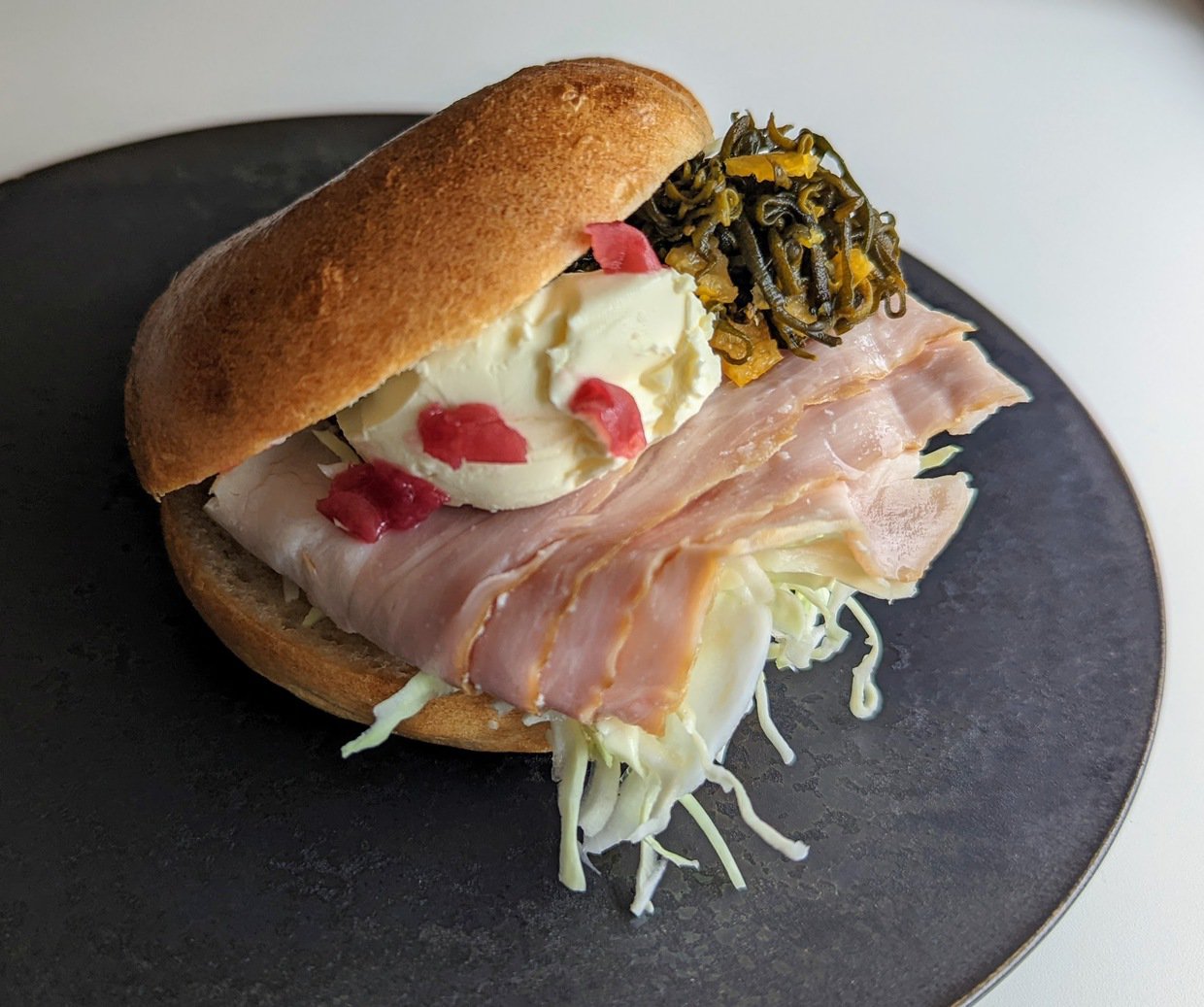
Yuzu Hijiki sandwiched in bagels is great!
It was surprising to find out that hijiki pairs well with bread too.
Amazing
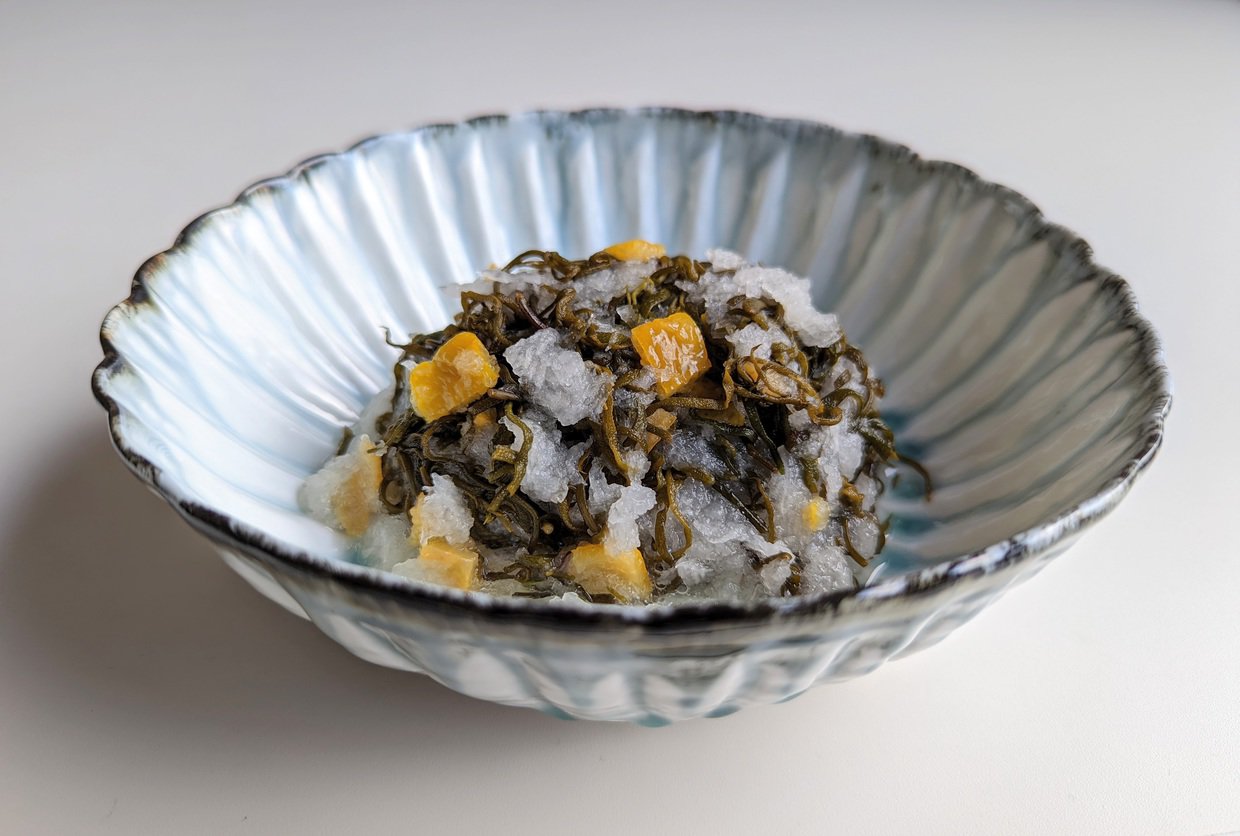
[Yuzu Hijiki Radish oroshi] or [Mizore Yuzu Hijiki]
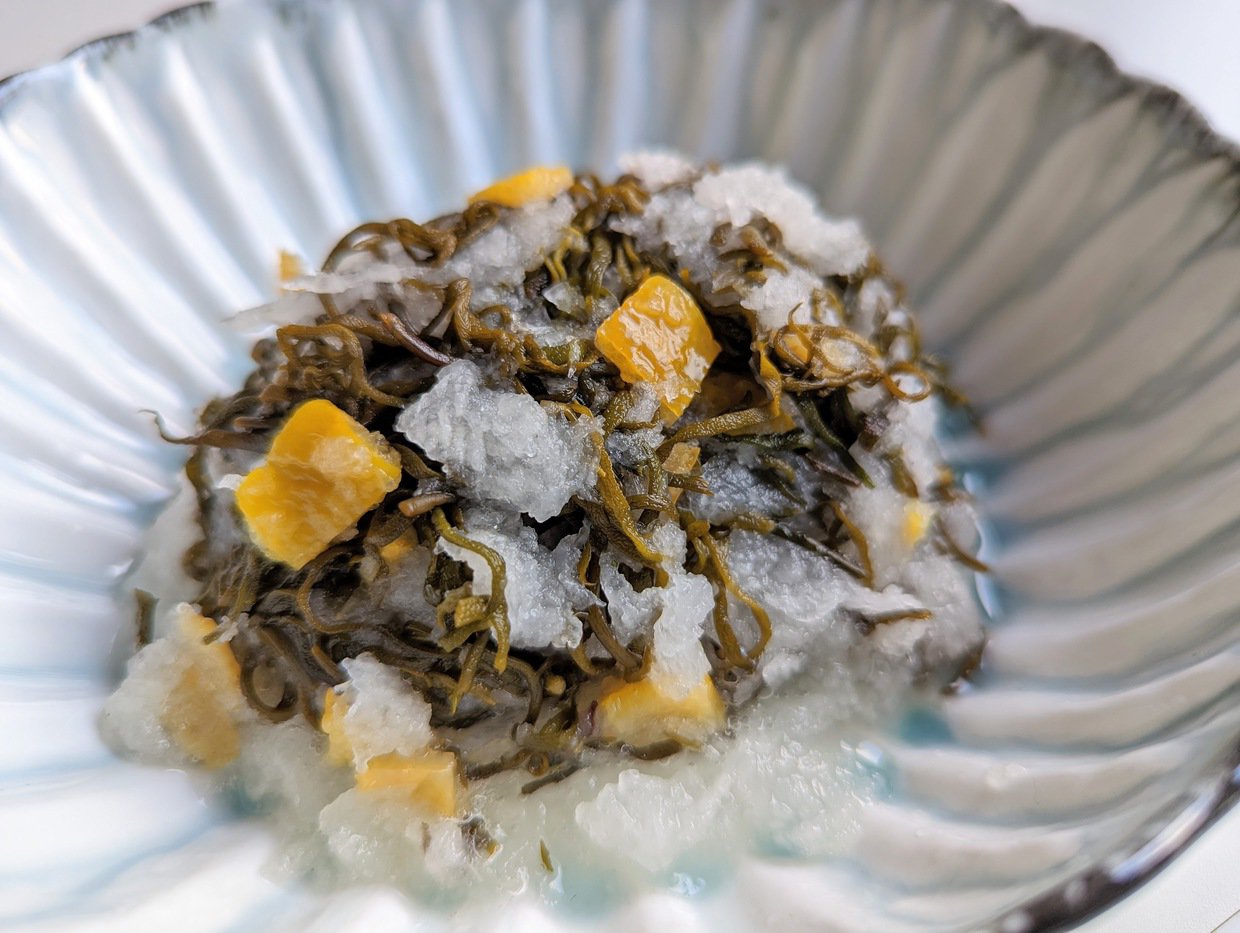
Mix yuzu hijiki and grated radish, which is a bit of salt. Simple as that.
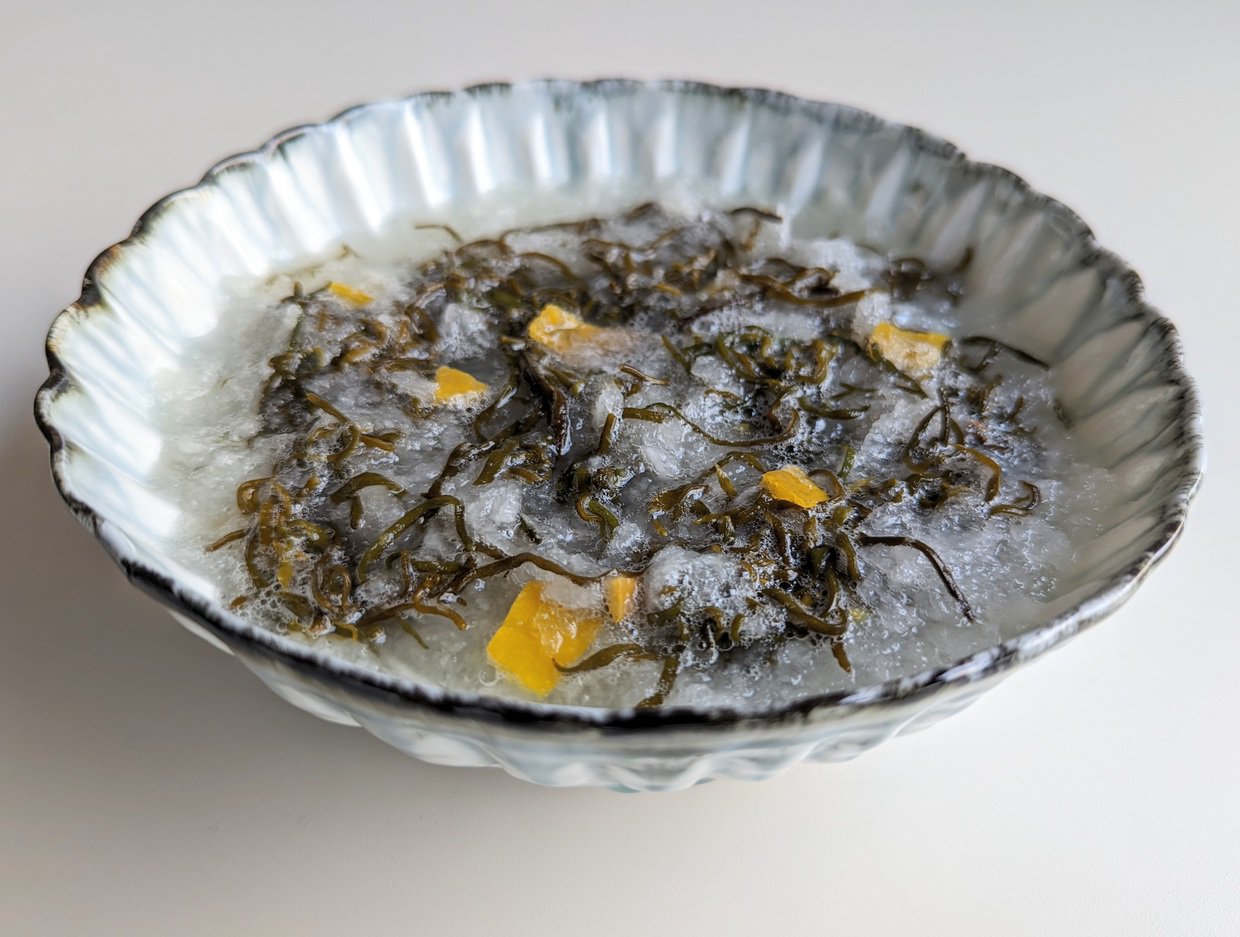
You can enjoy both ways; squeeze excess water from the radish or use it as it is with a lot of moisture.
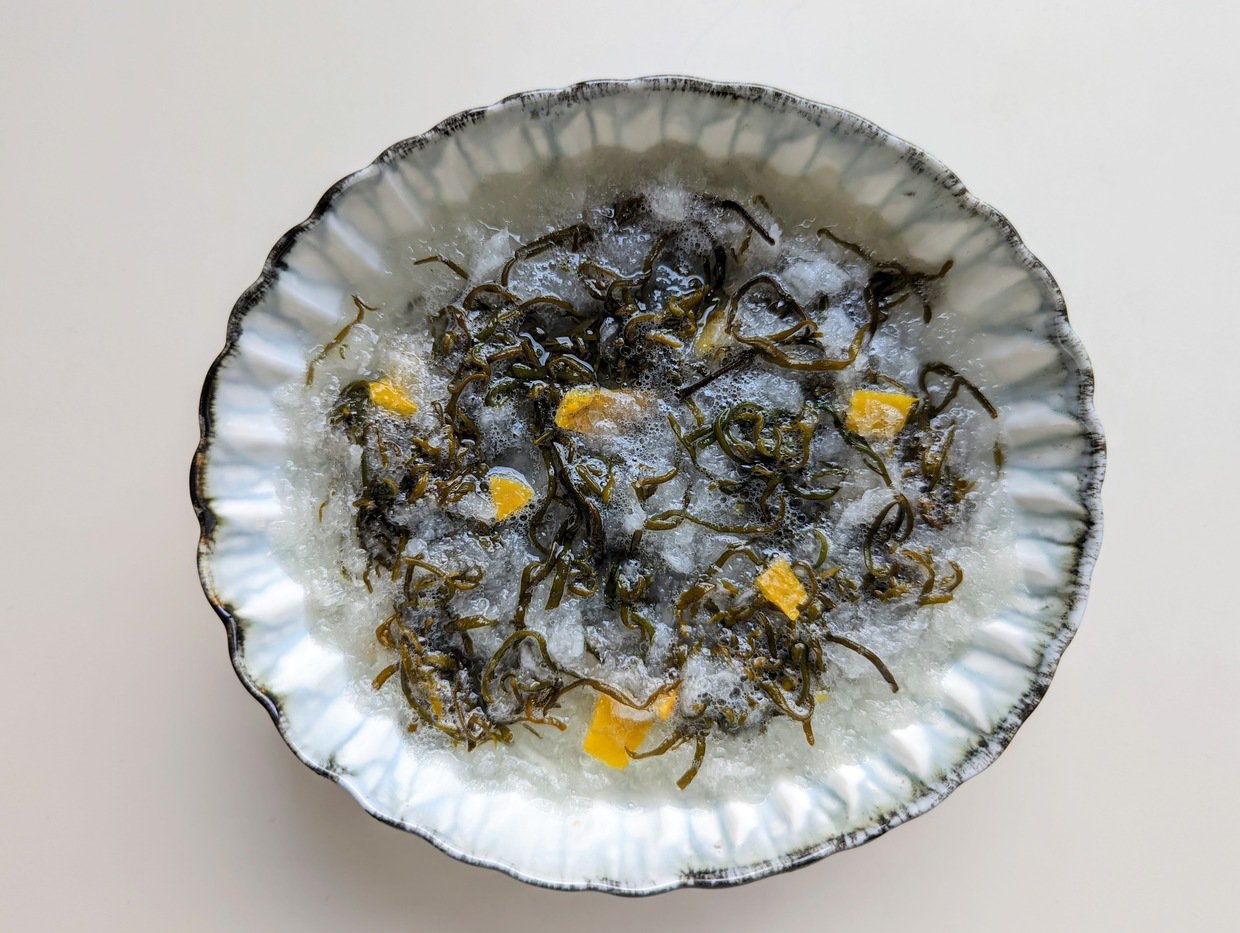
A great accompaniment at your dinner table.
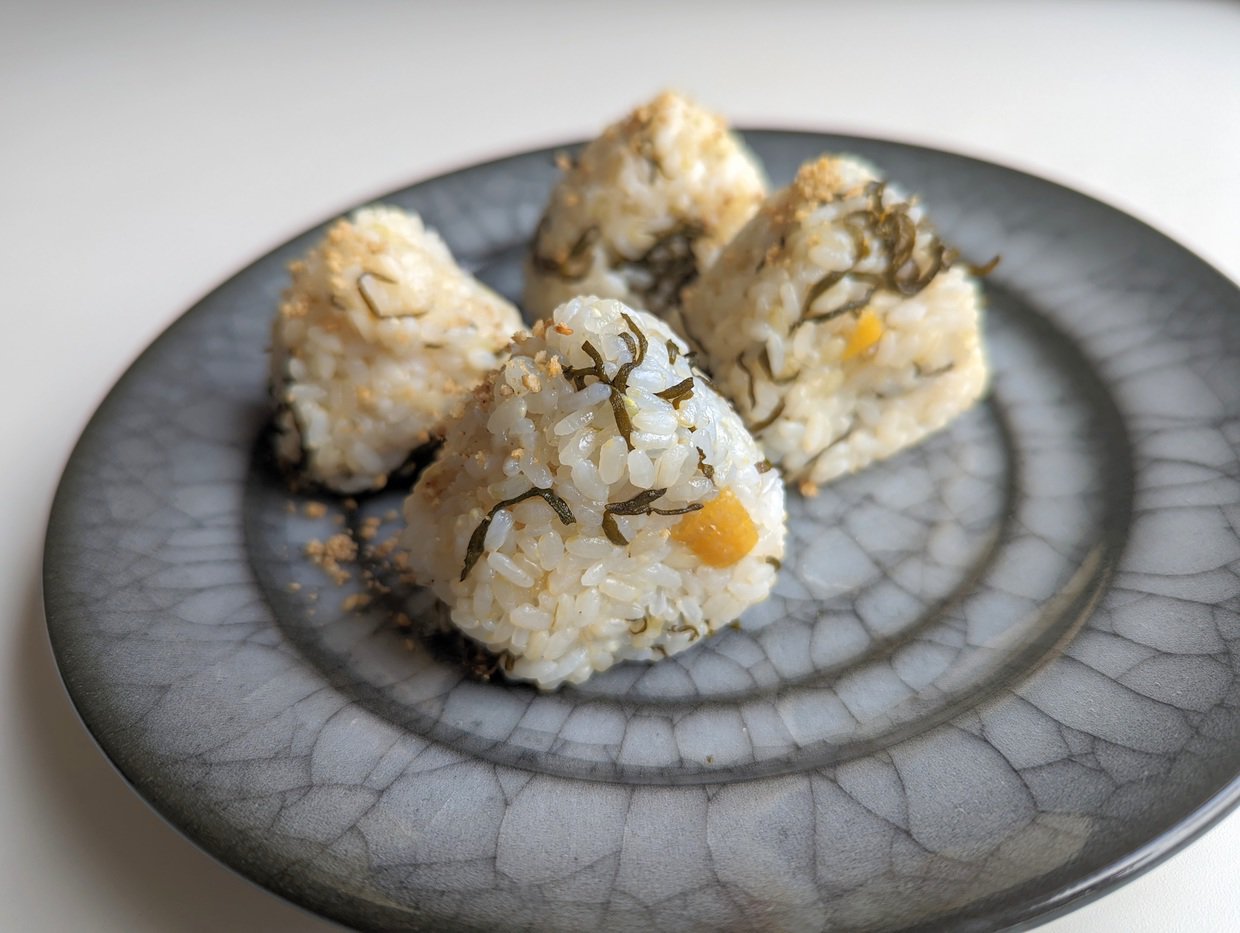
[Yuzu Hijiki Onigiri]
This is classic!
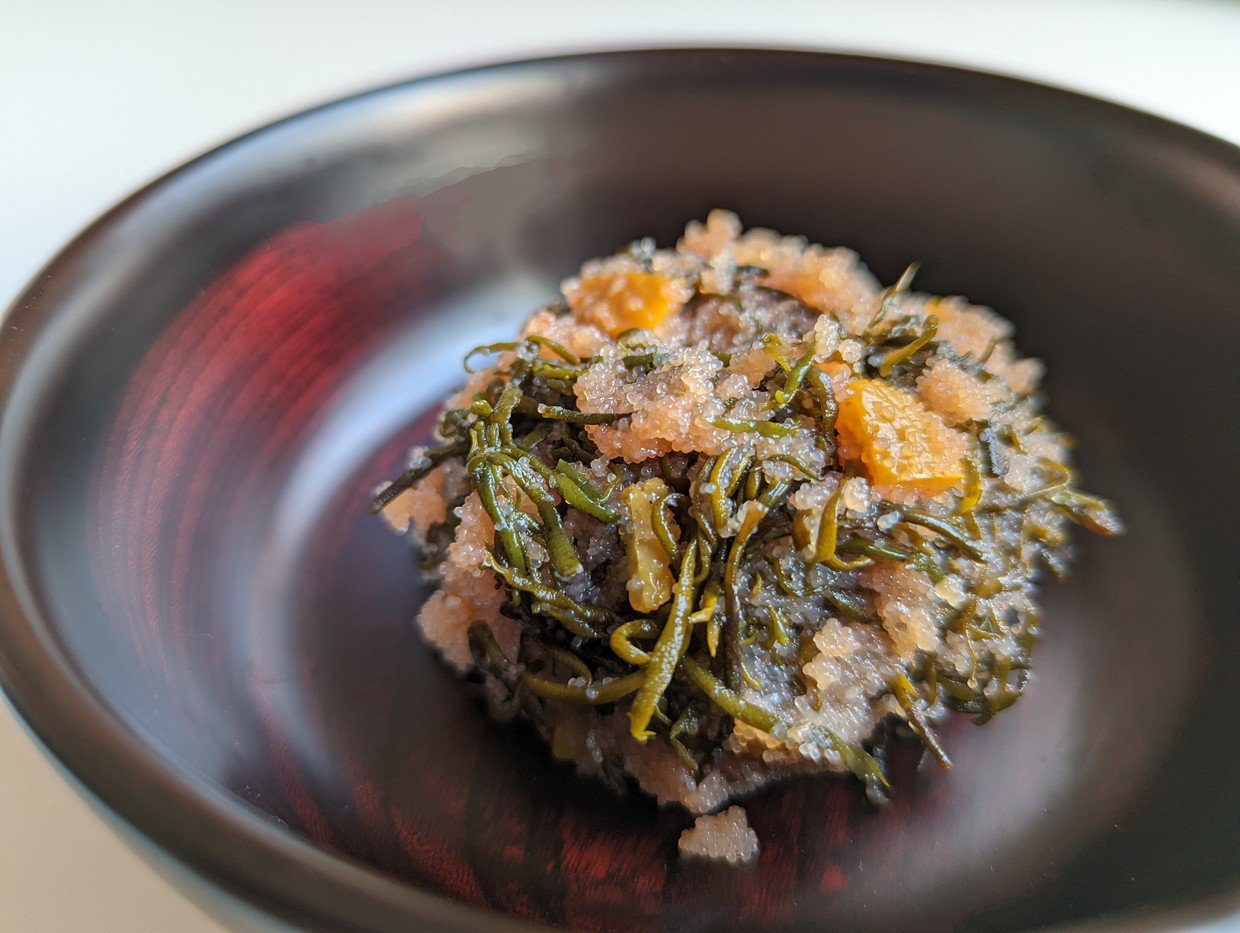
[Yuzu Hijiki Mentaiko (Cod Roe)]
Just mix hijiki with cod roe!
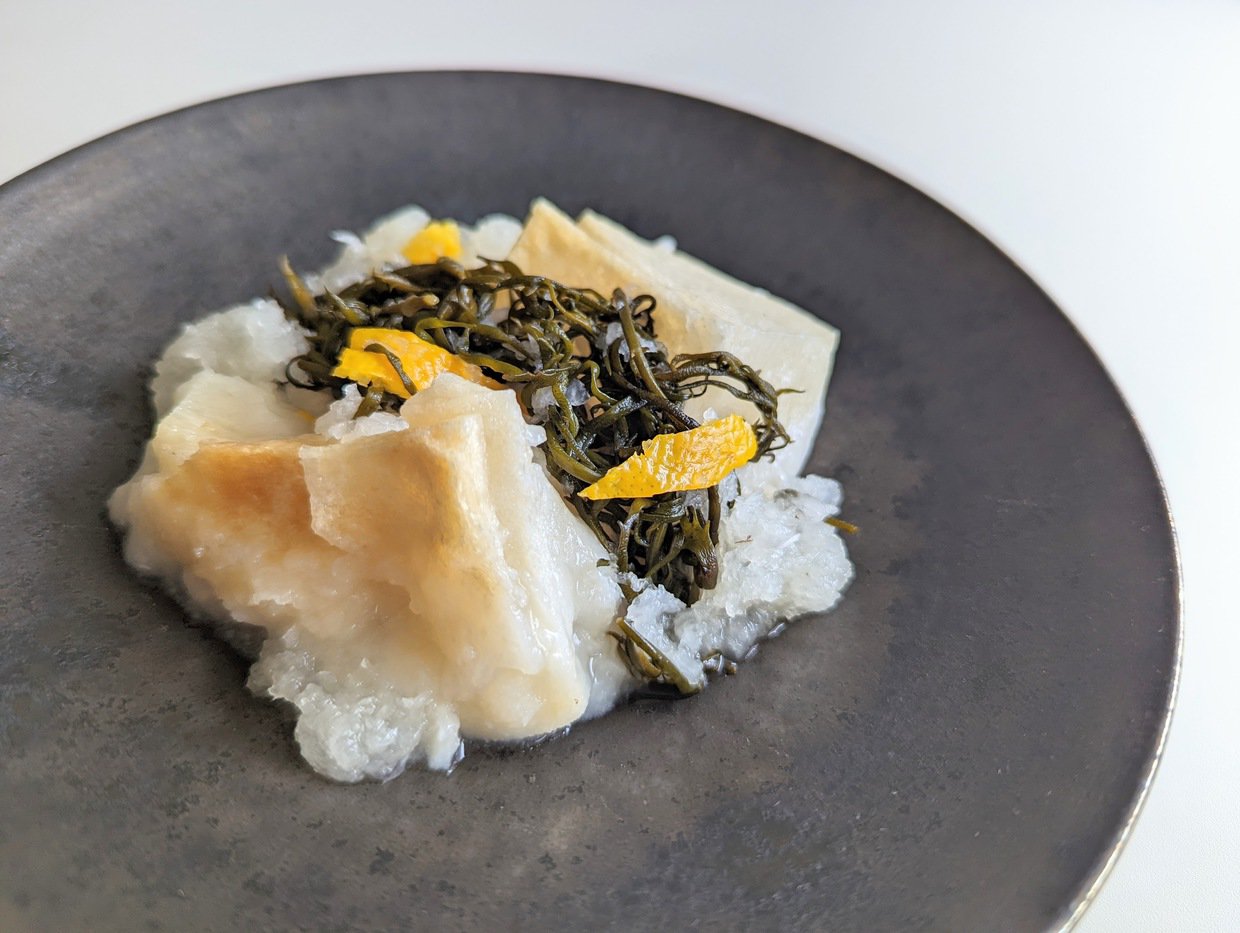
[Yuzu Hijiki Mochi (Rice cake)]
Yuzu Hijiki on the baked rice cake.
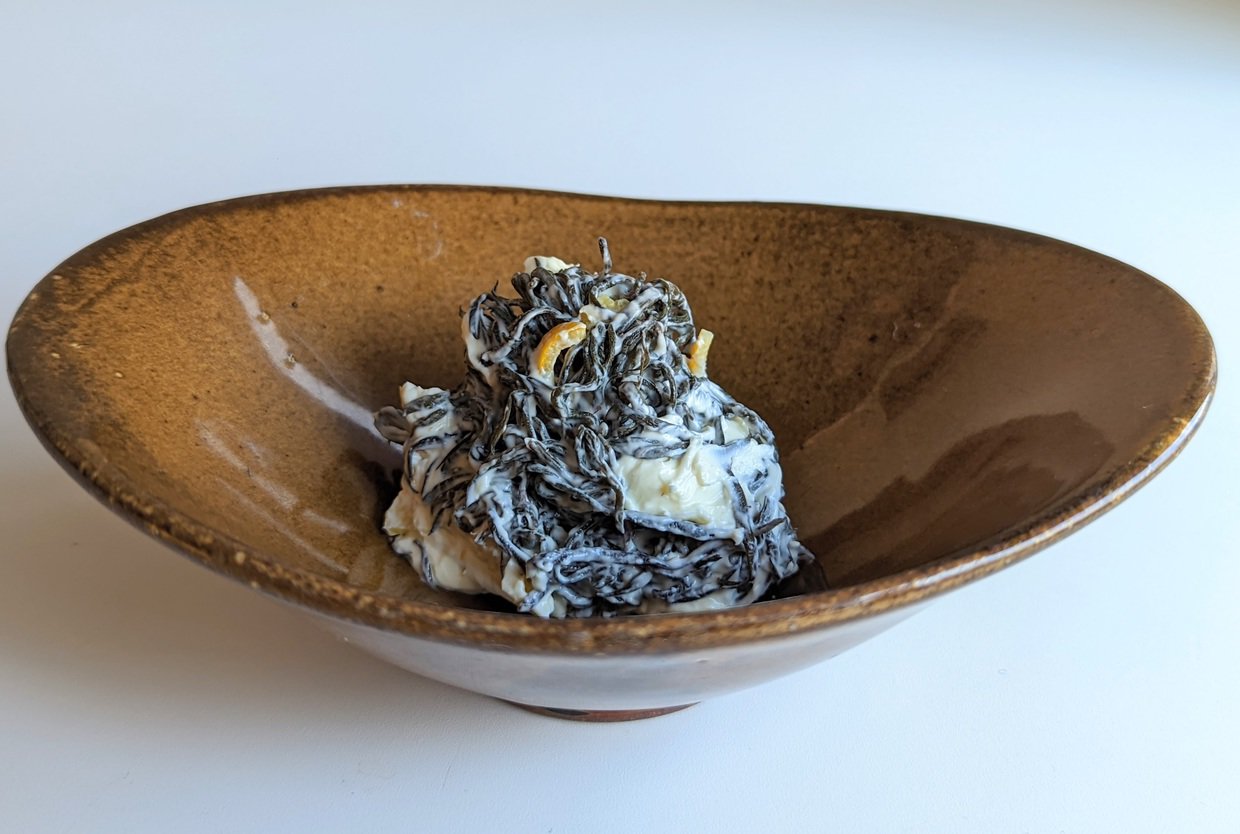
[Yuzu Hijiki Cream Cheese]
* Since cream cheese contains salt, I recommend you to desalt the hijiki for 5 to 6 minutes.
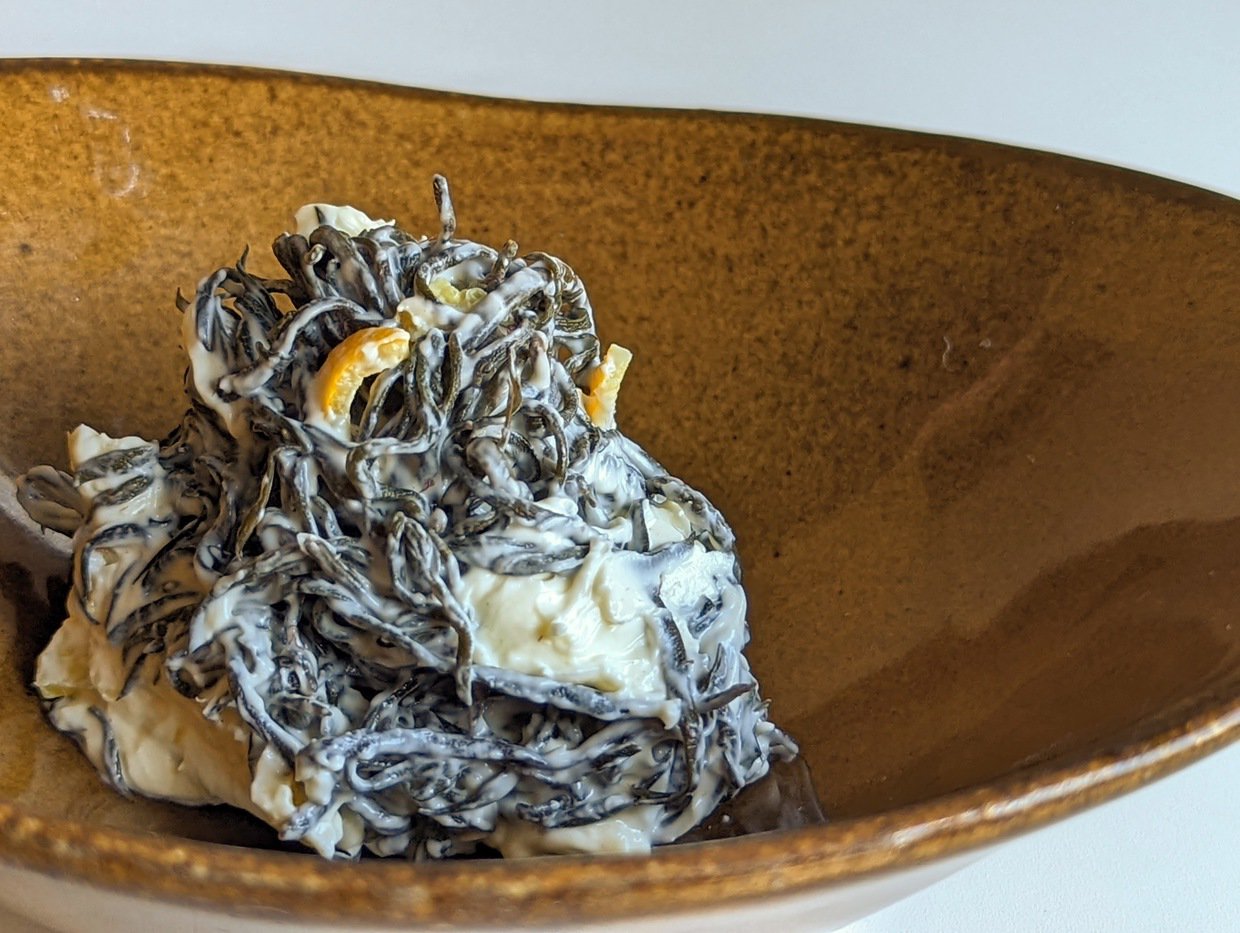
Sand in bread, mix with avocado or other vegetables. Good with salads too!
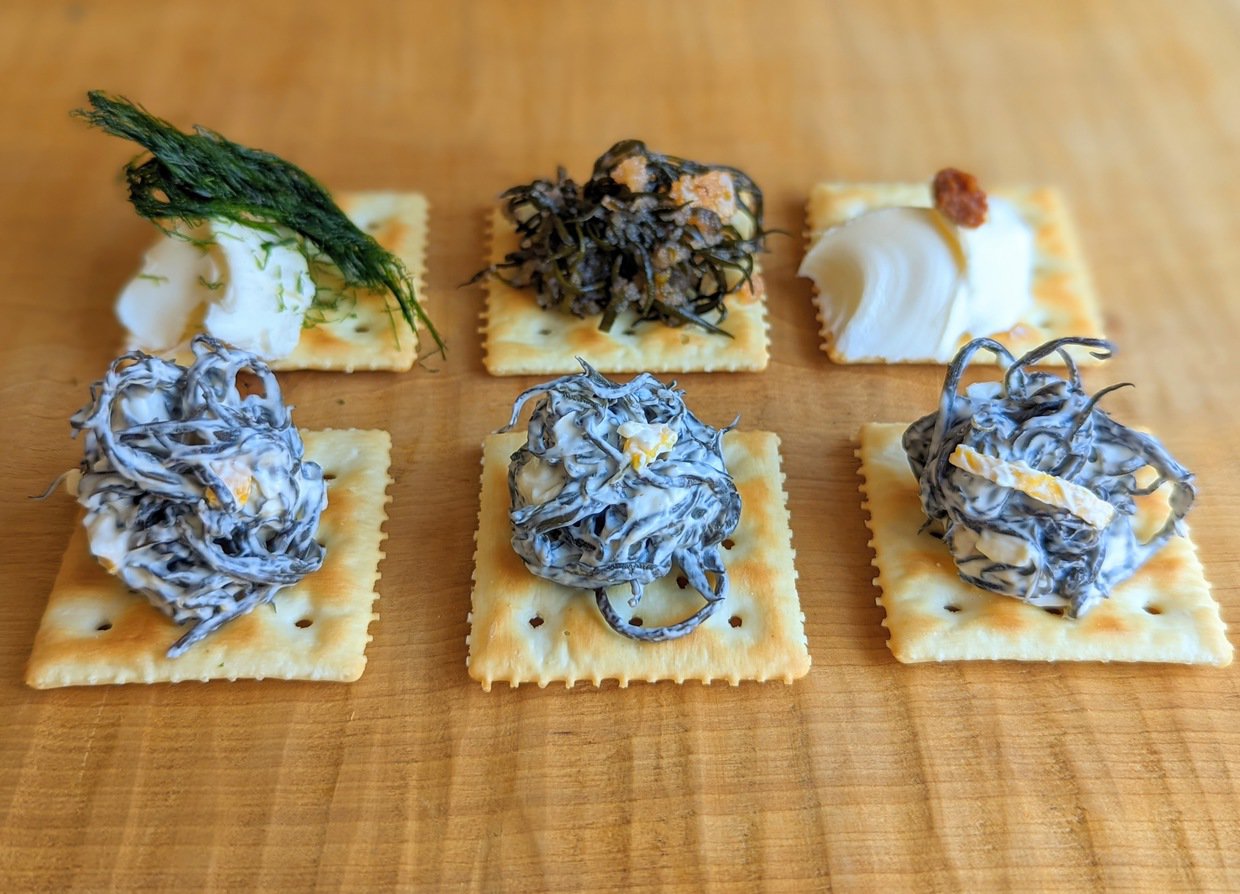
Cream Cheese Hijiki on crackers.
You can also incorporate seaweeds in home parties as well!
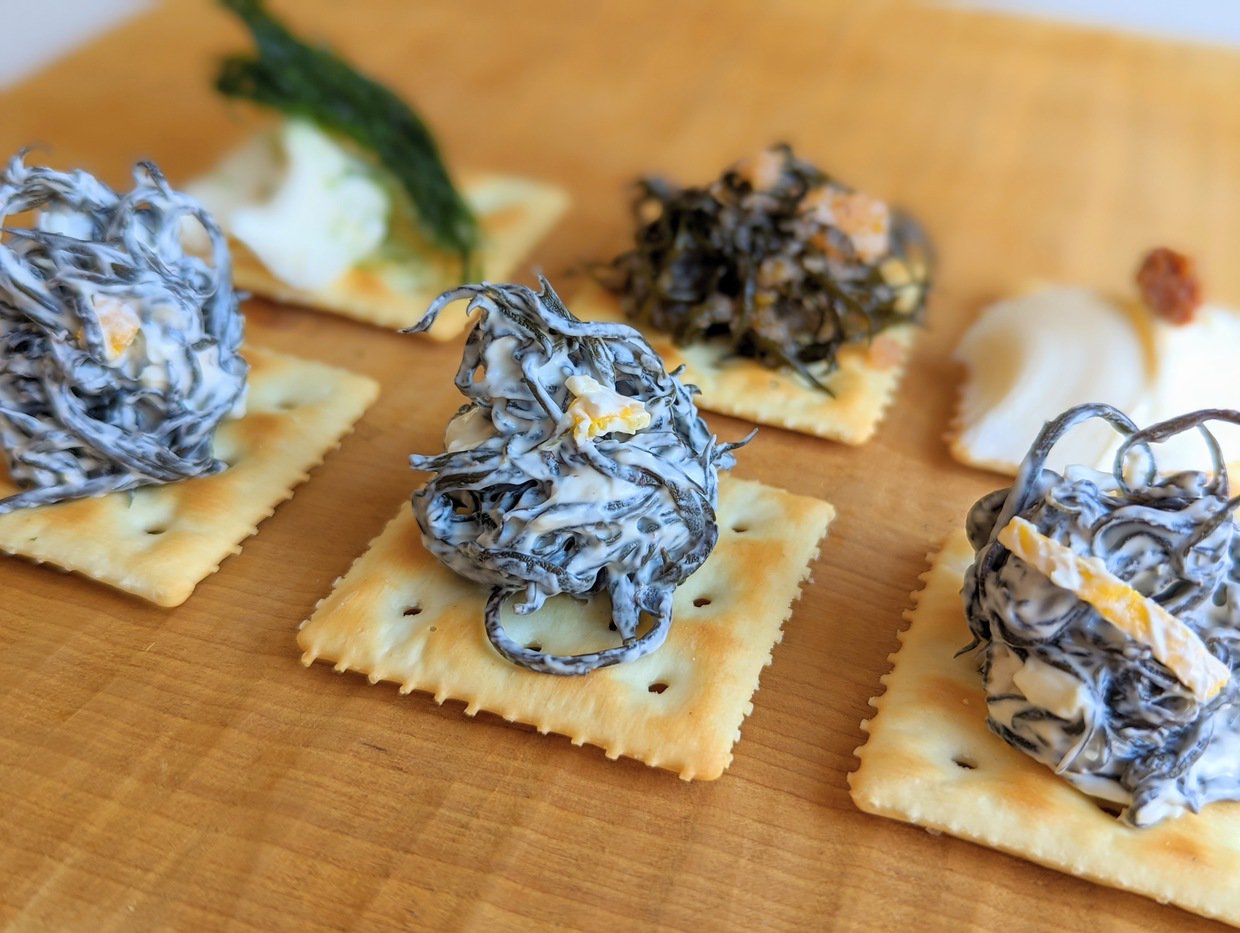
It looks good and also delicious!
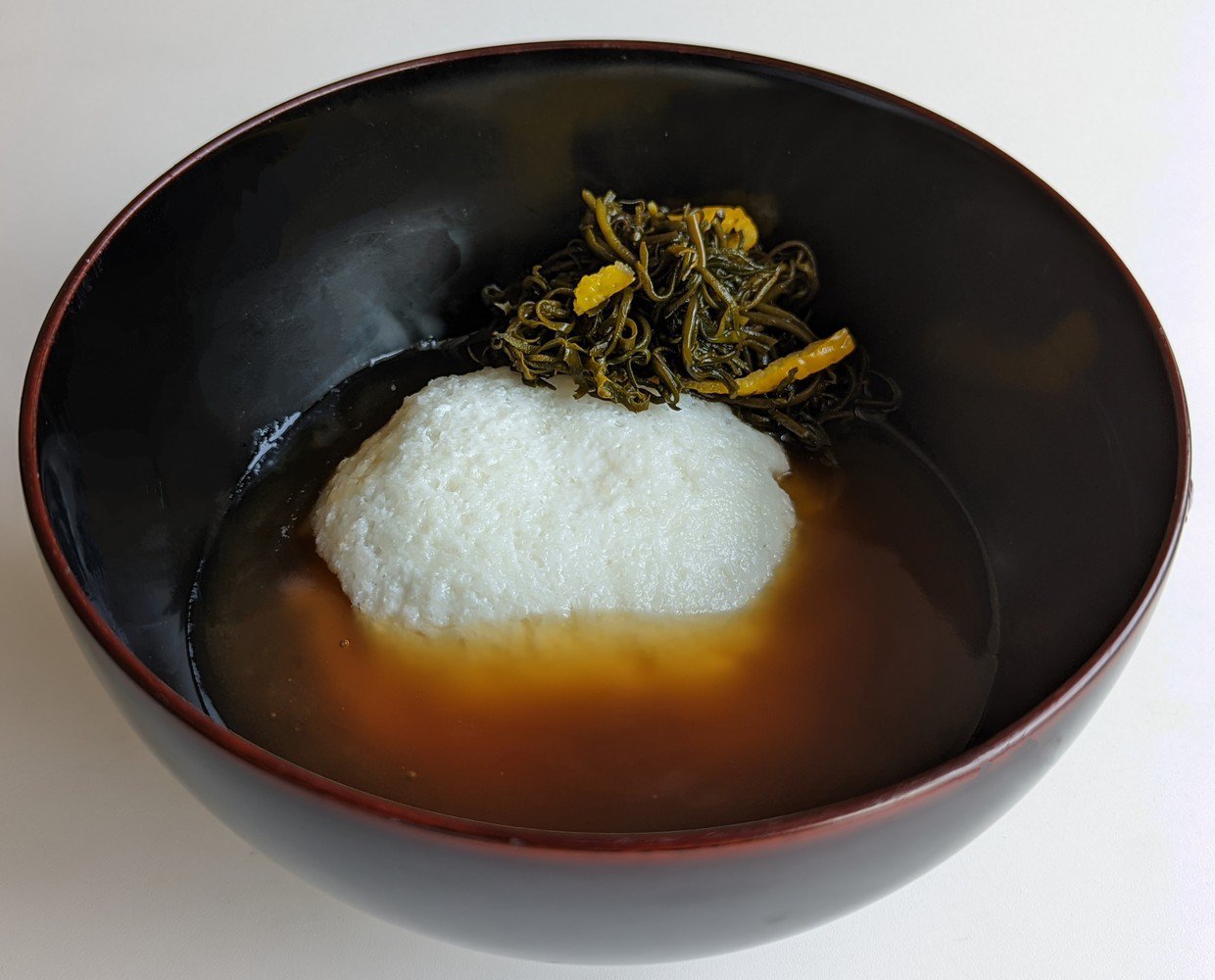
[Turnip steamed yuzu hijiki]
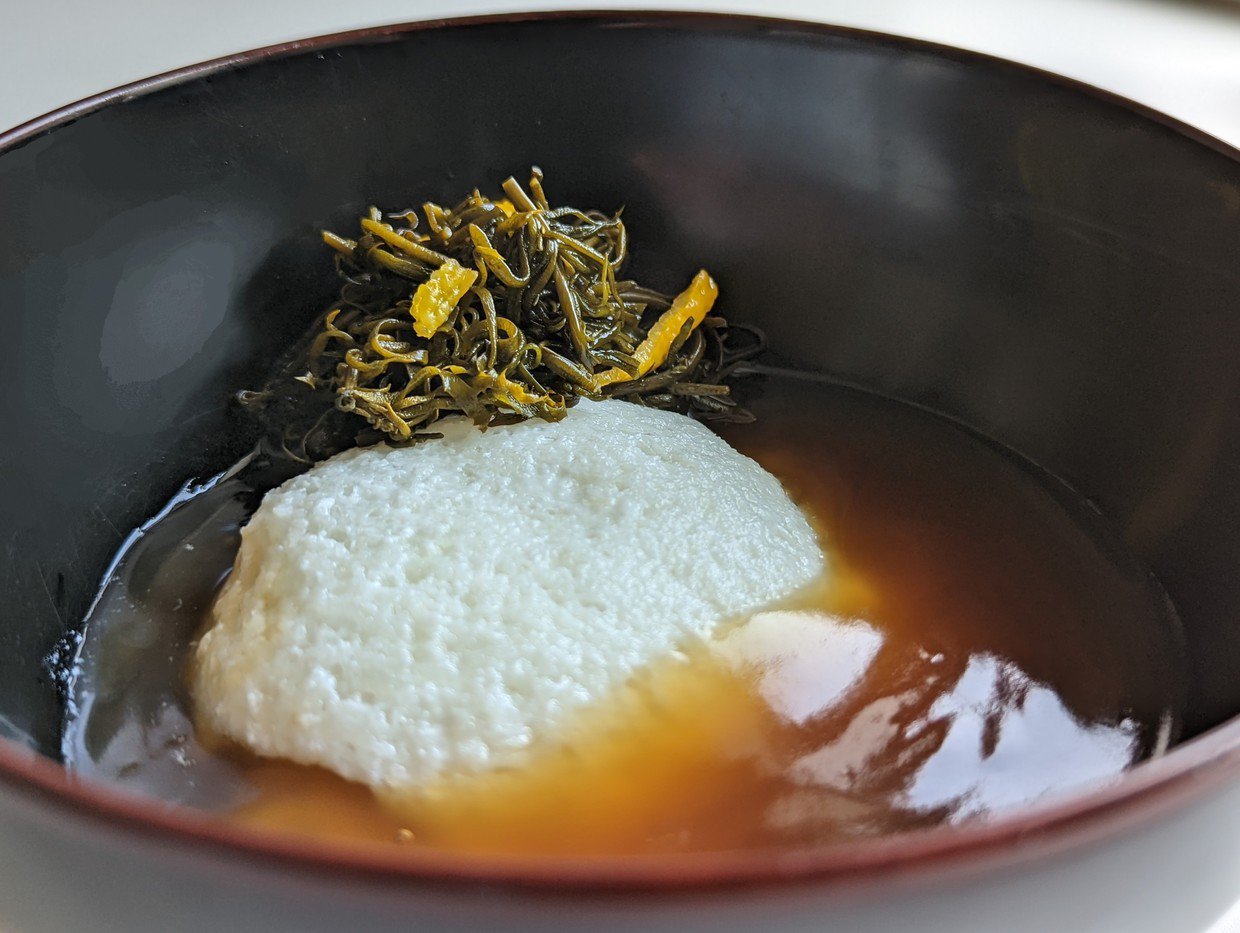
Pour hot Ankake sauce on steamed Kabura (trunip). Sprinkle some young hijiki and its all ready!
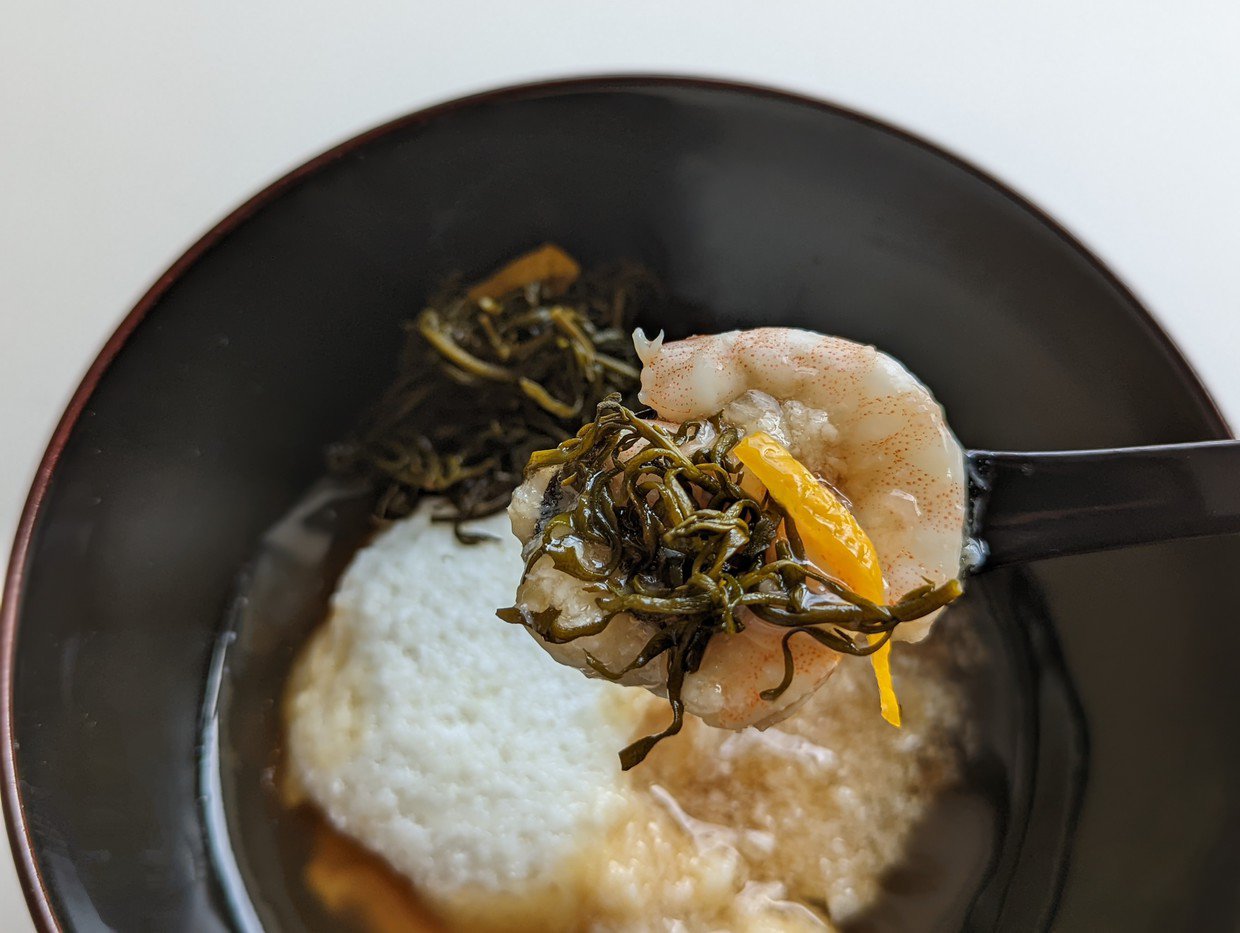
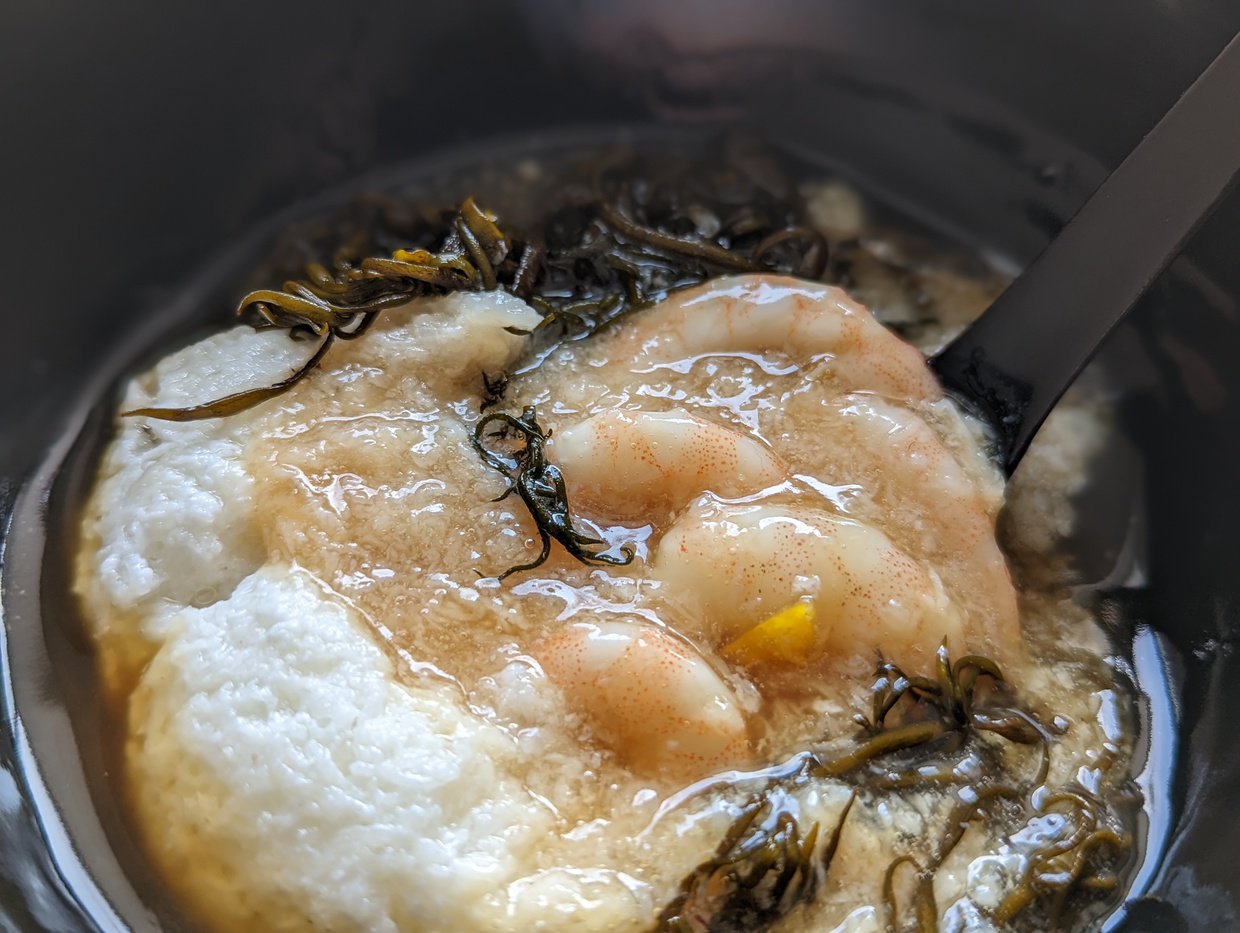
Inside the kabura is shiba shrimp.
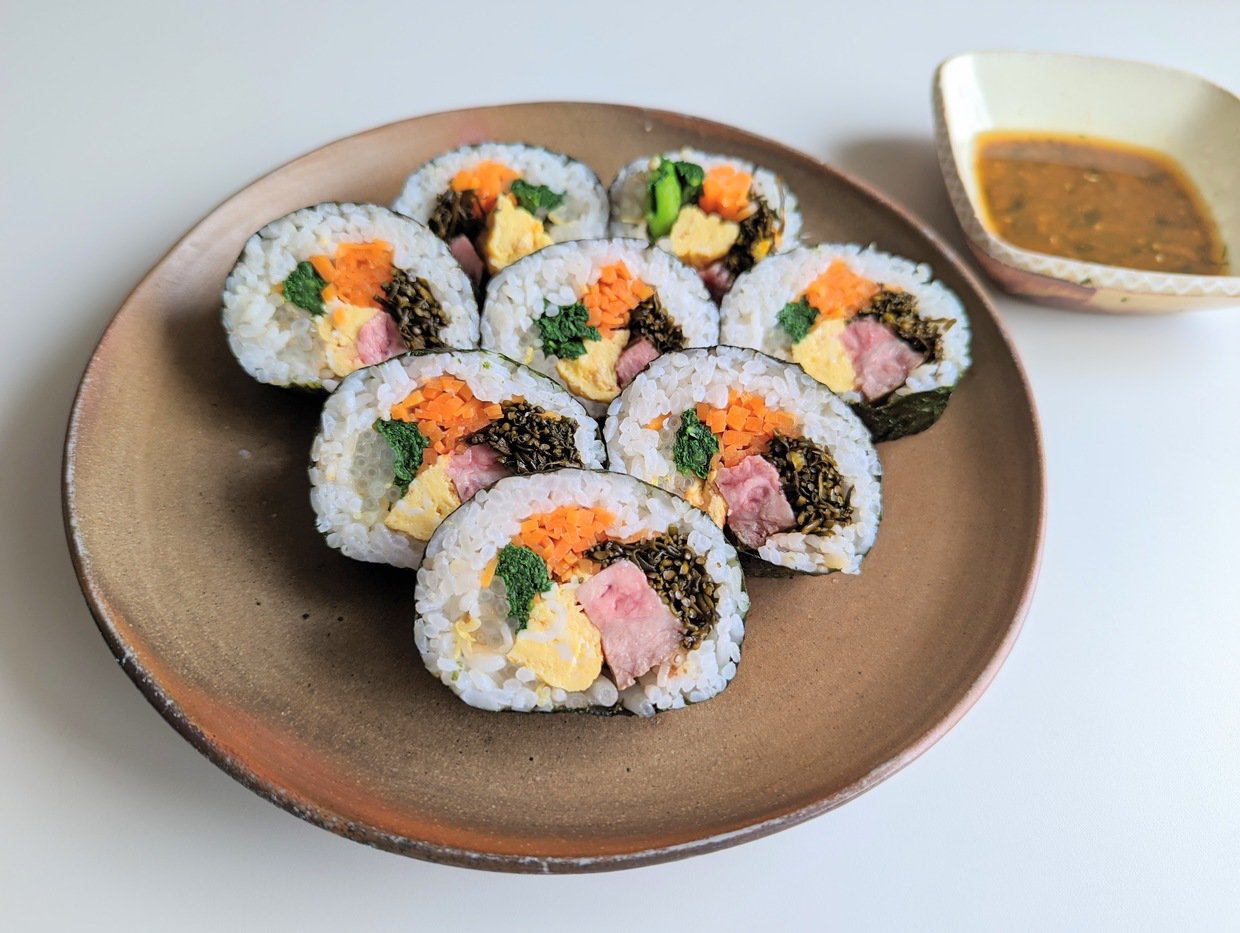
[Kimpap (김밥)]
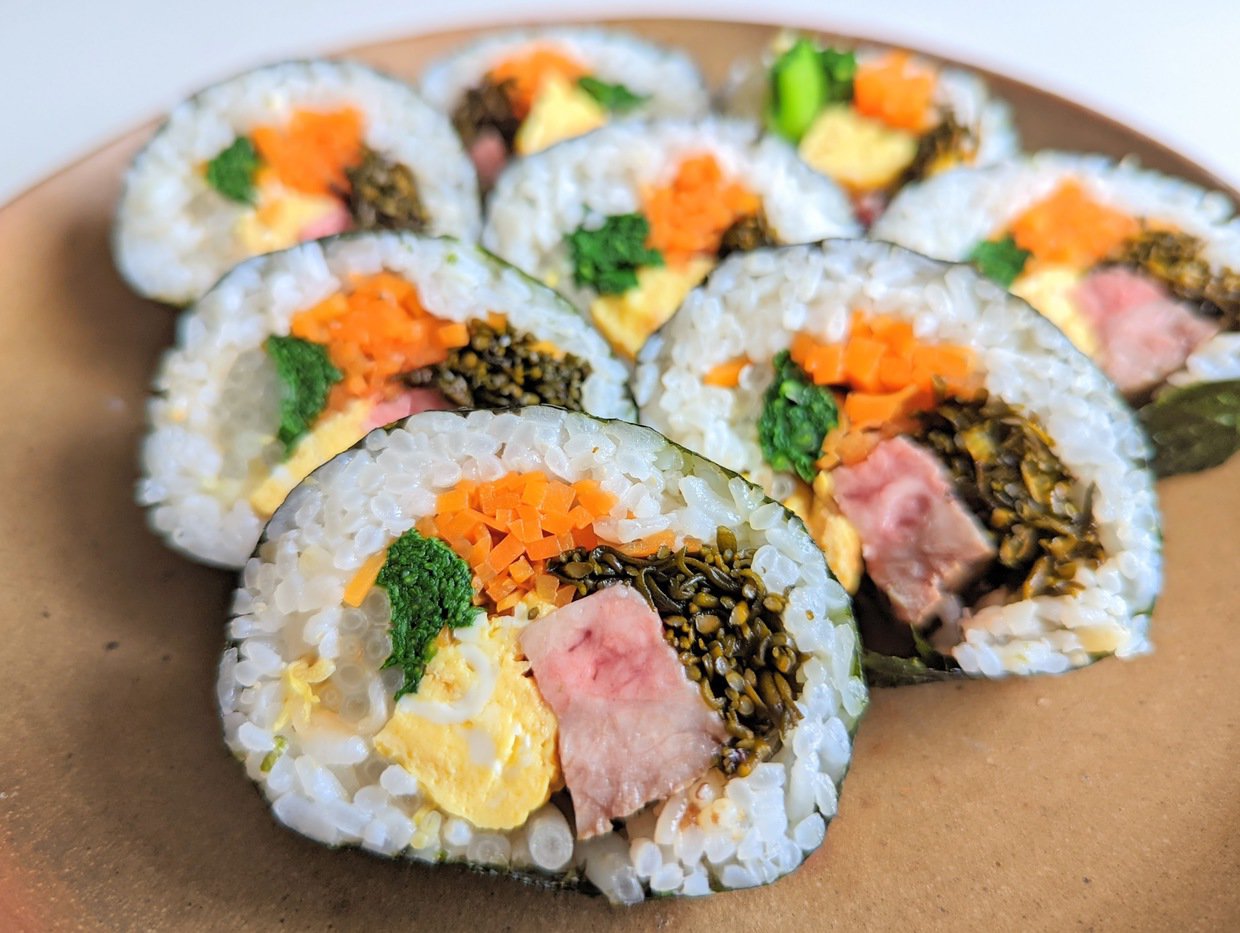
Yuzu hijiki has a good compatibility with sesame oil -based ingredients like Kimpap!
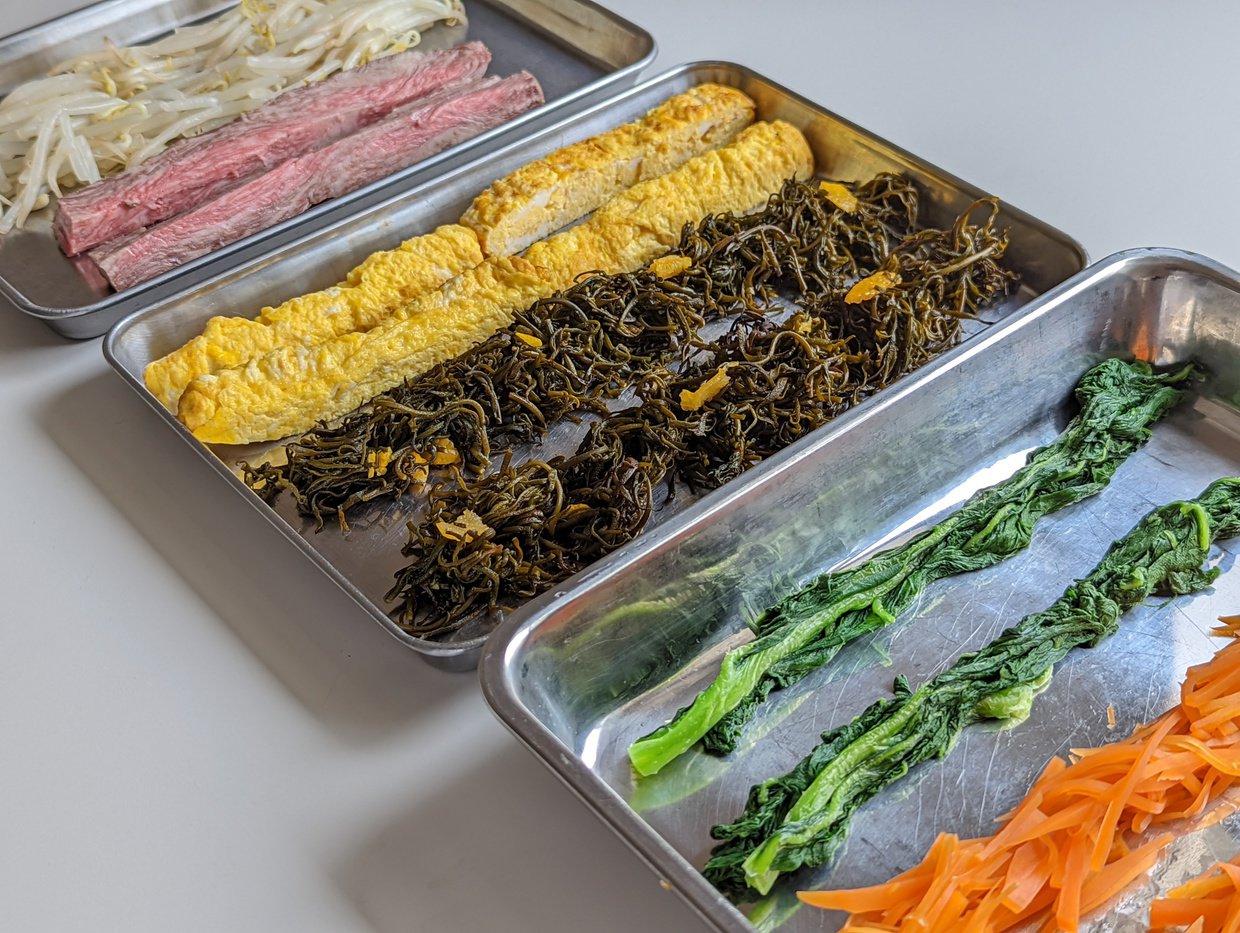
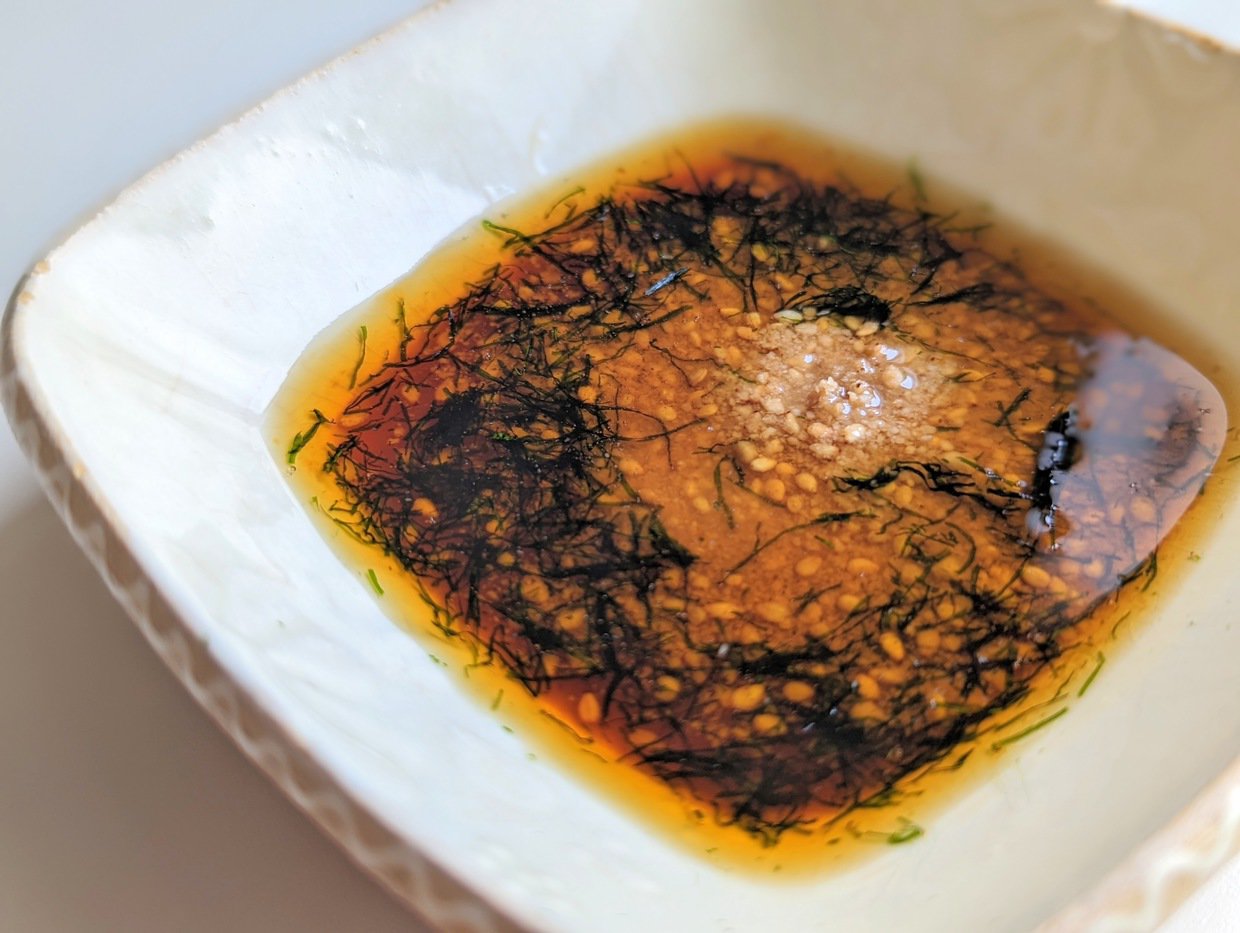
Try adding Suji Aonori in BBQ sauce to make it even more tastier!
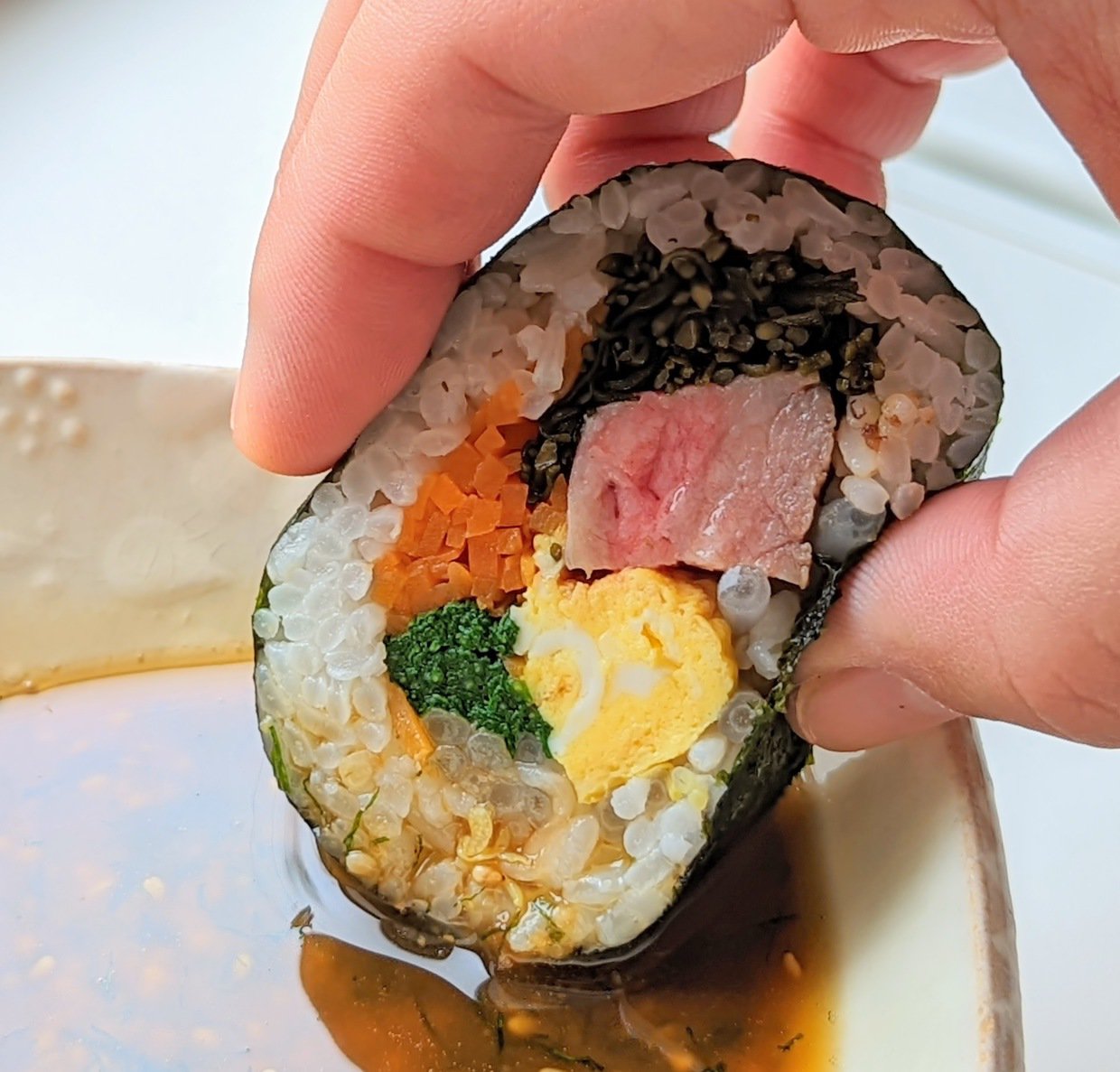
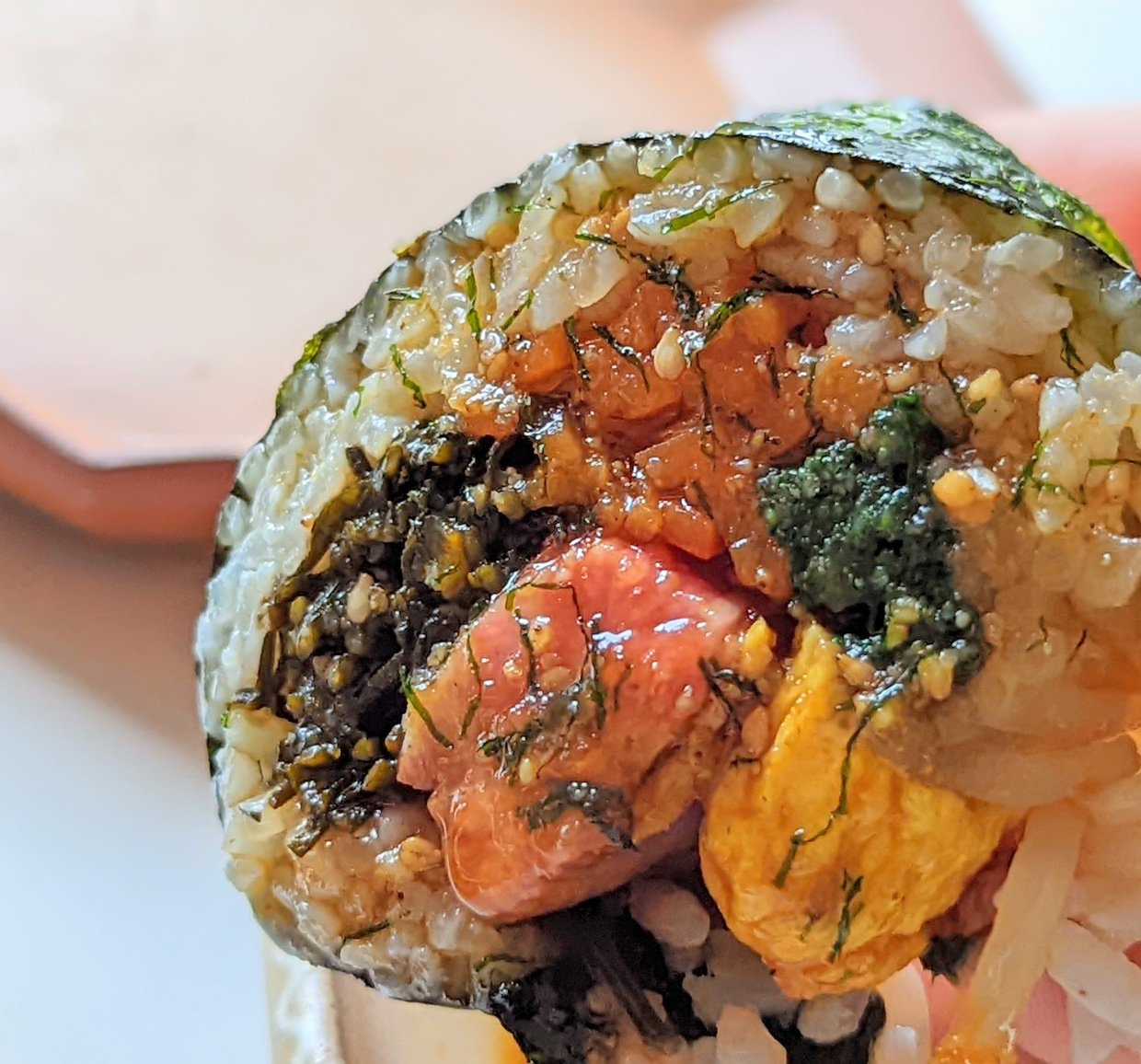
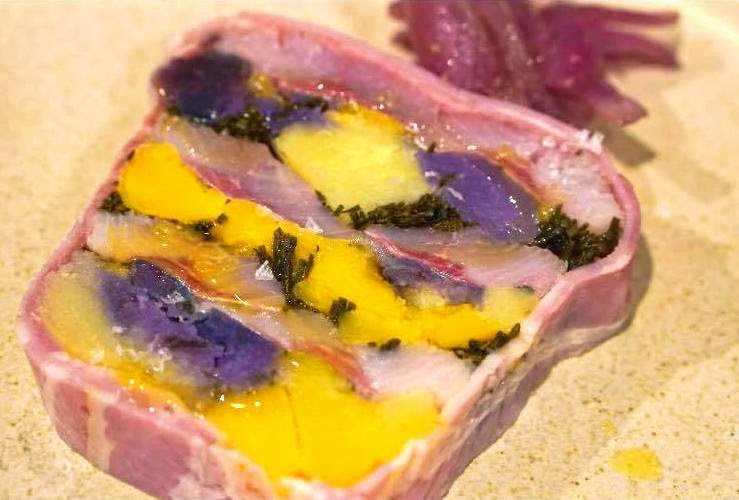
[Herring, potatoes and hijiki Terrine]
by Kagurazaka Wine Shokudo, Maki Kudo
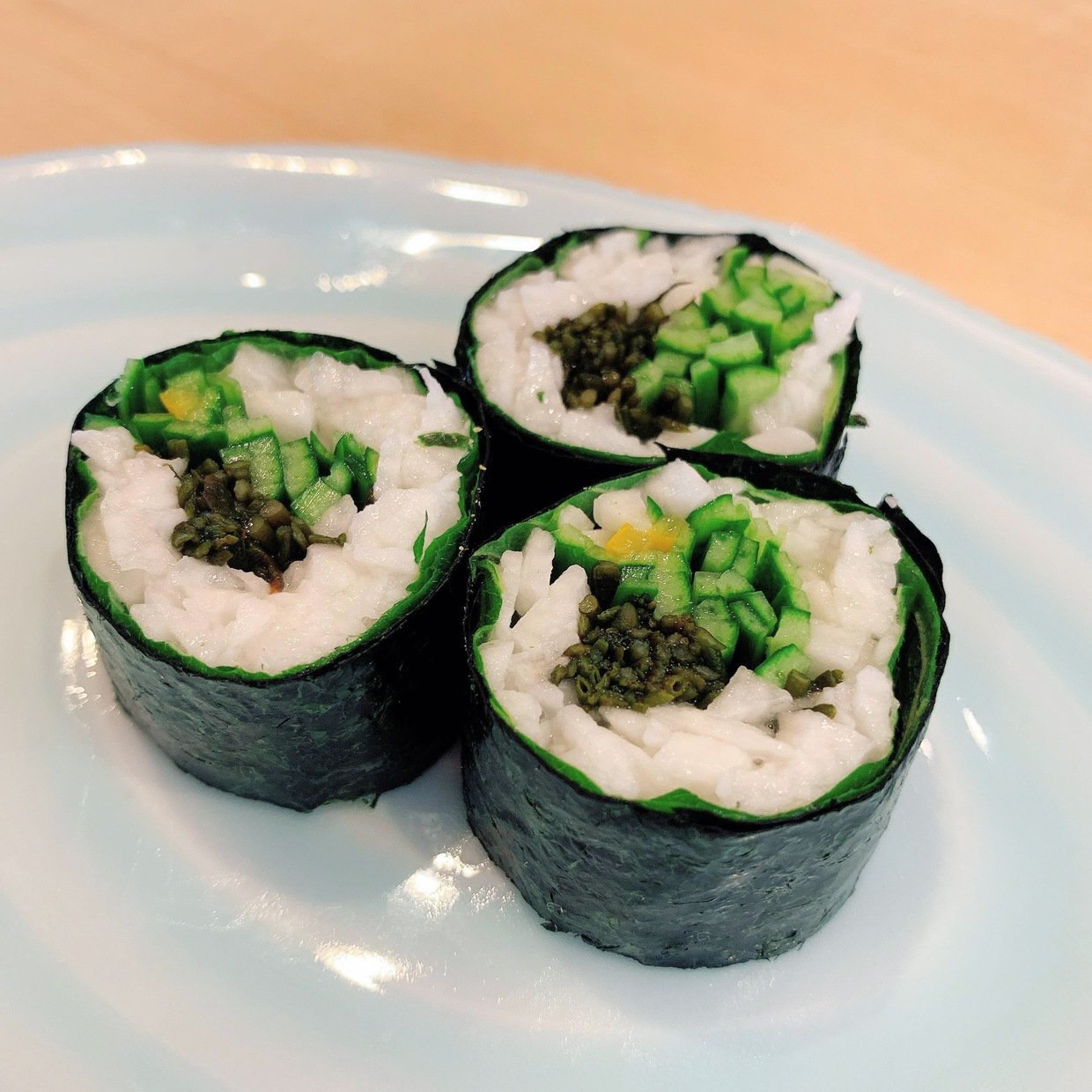
[Yuzu Hijiki and Nagamo Yam Tataki, Cucumber and Oba leaf rolled sushi]
by Susuga Hisa, Masahiro Suga
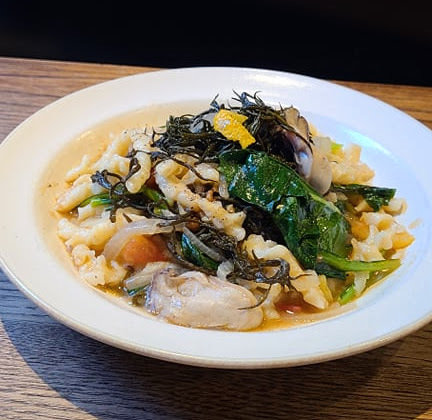
[Yuzu Hijiki with Hiroshima Prefecture Oysters, Komatsuna tomato oil pasta]
by Campper, Saori Numata
Daisuke Okada
Born in 1979 / Sushi artisan and Sushi chef.
At the age of 18, he embarked on a journey into the world of food, dedicating himself to mastering the art of sushi. By the age of 24, he had gained enough experience and expertise to venture into independent sushi craftsmanship.
In 2008, he founded "Sumeshiya," a sushi restaurant located in Chuo Ward, Tokyo, operating on a reservation-only basis, catering to one group per day. His establishment quickly became a topic of discussion among food enthusiasts.
Subsequently, in 2016, he relocated his restaurant from Asakusabashi to Edogawabashi in Bunkyo Ward. Over the years, Okada has continuously expanded the possibilities of being a sushi artisan, participating in various projects such as serving as a model for a sushi manga titled "L’Art du Sushi" in France and curating exhibitions related to tableware and culinary arts at the New National Museum of Art.
Furthermore, he has authored books such as "おすしやさんにいらっしゃい!Welcome to the Sushi Shop!" published by Iwasaki Shoten and "季節のおうち寿司 Seasonal Home Sushi" published by PHP Institute, showcasing his knowledge and passion for sushi cuisine.
